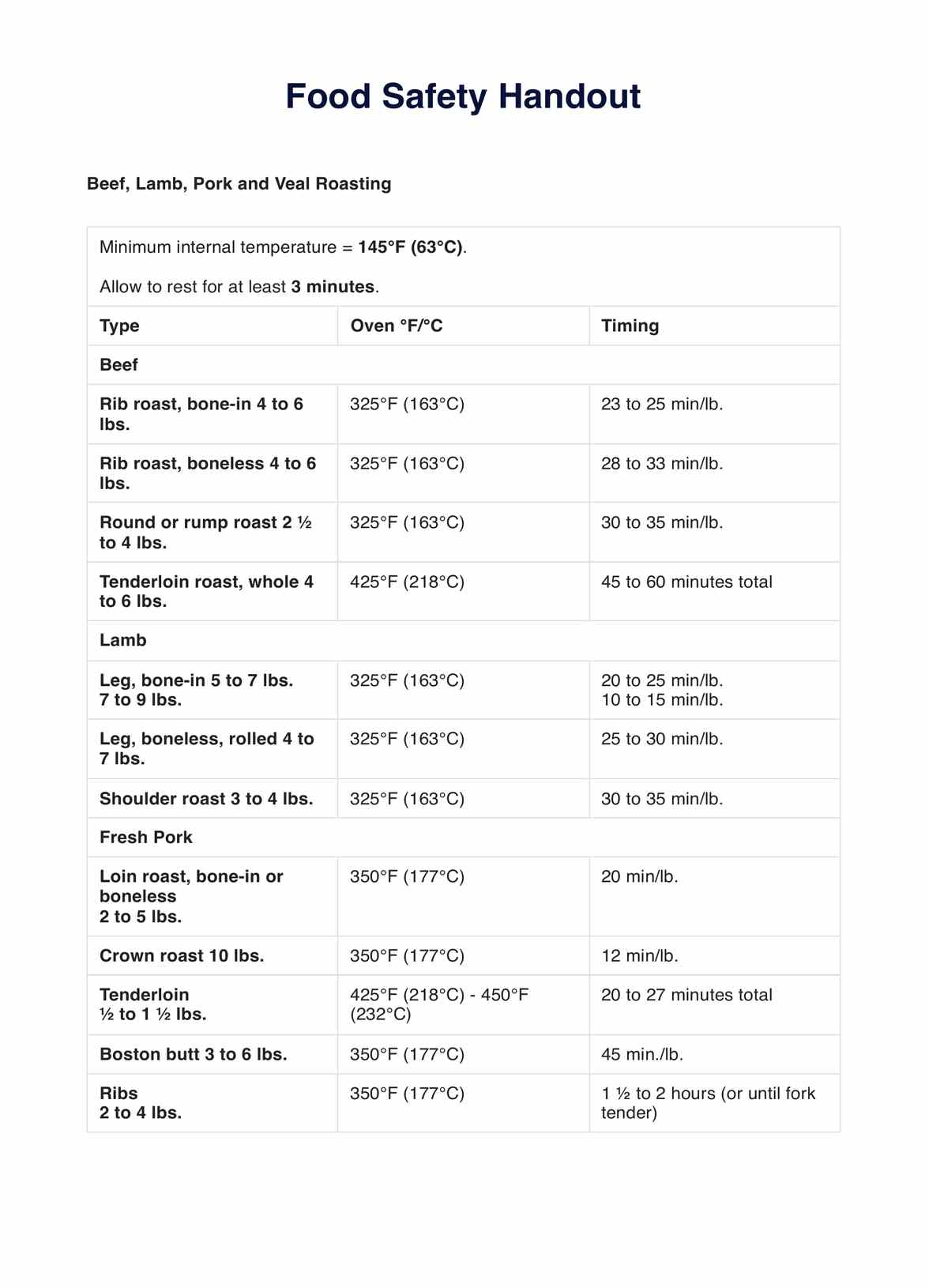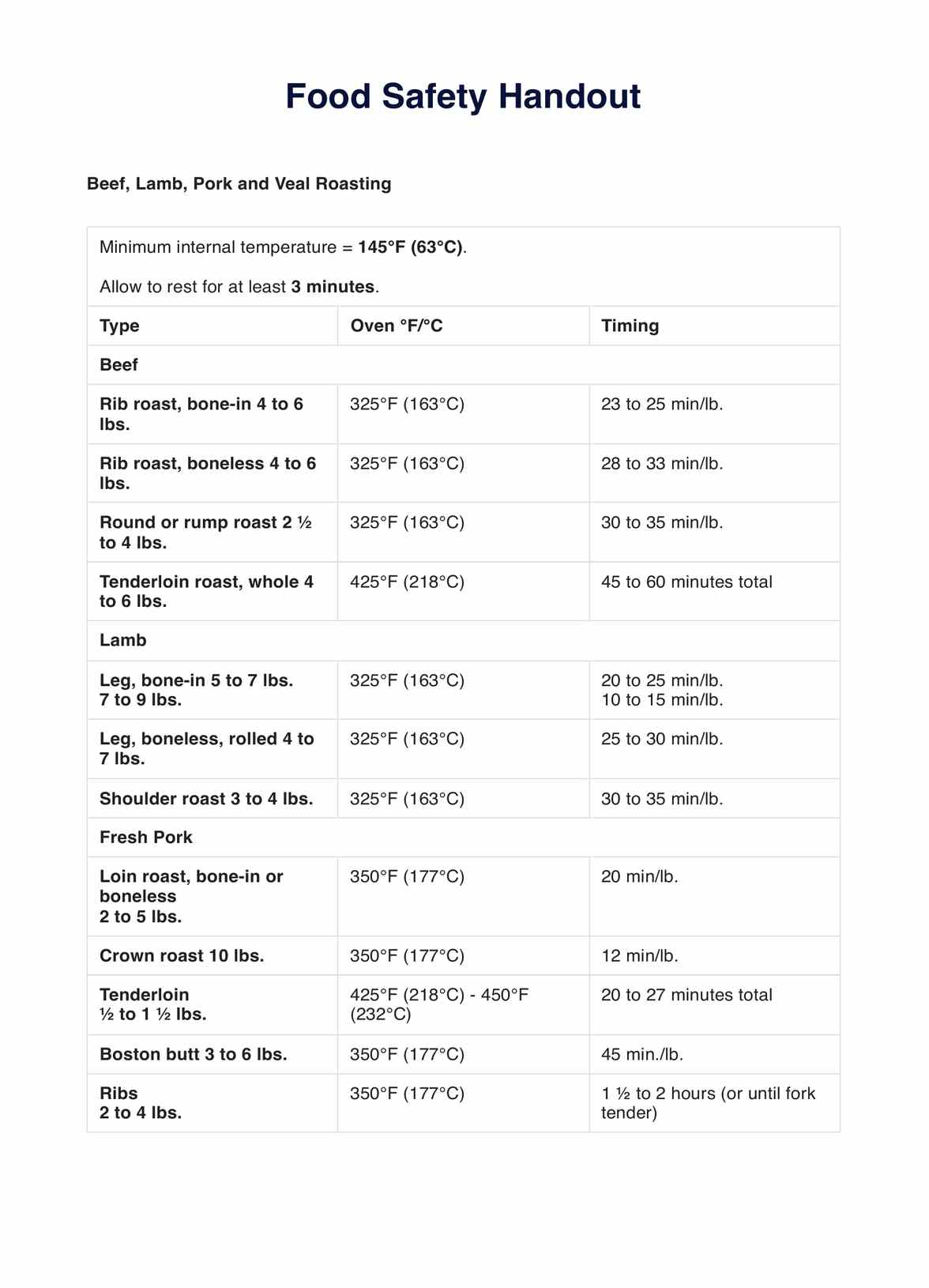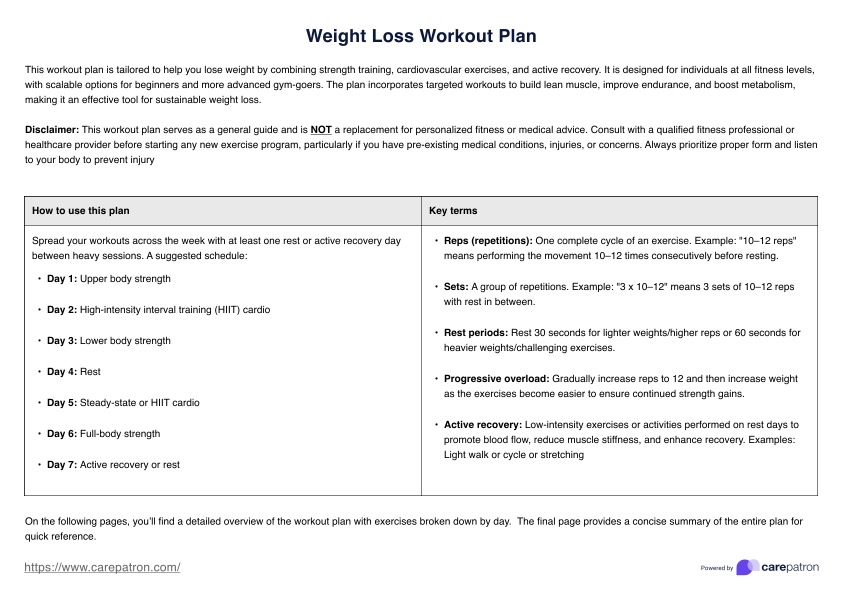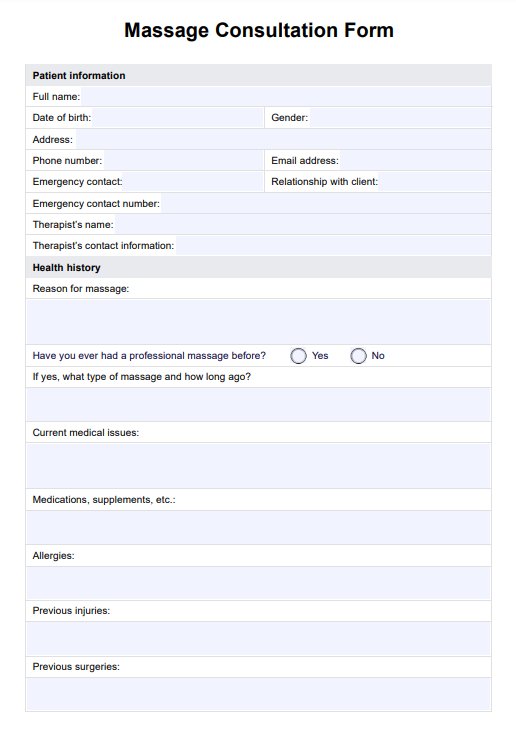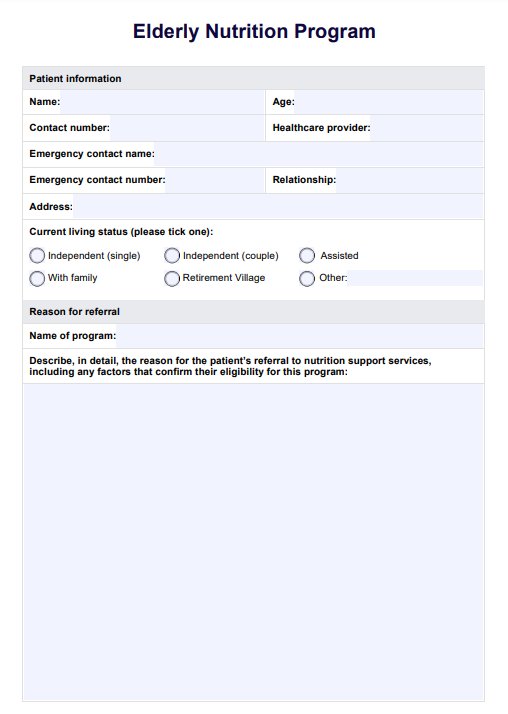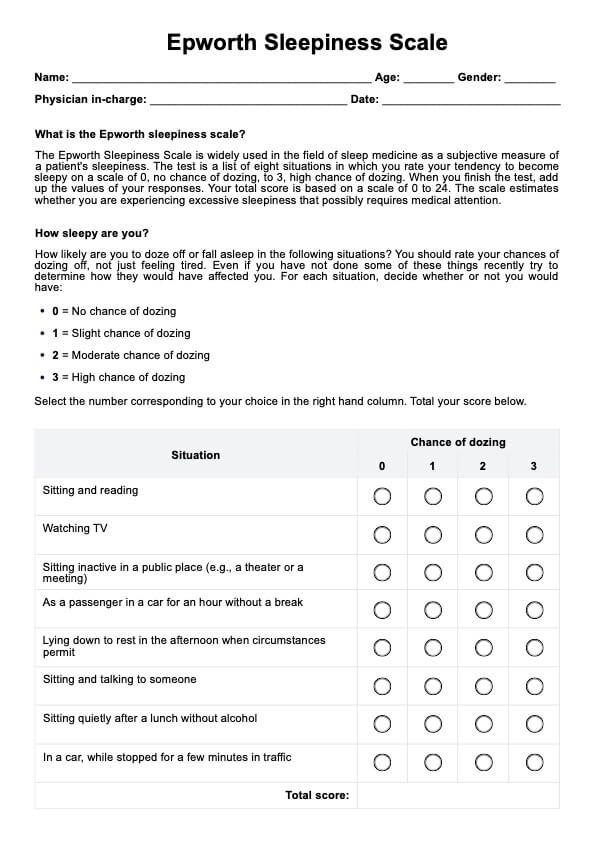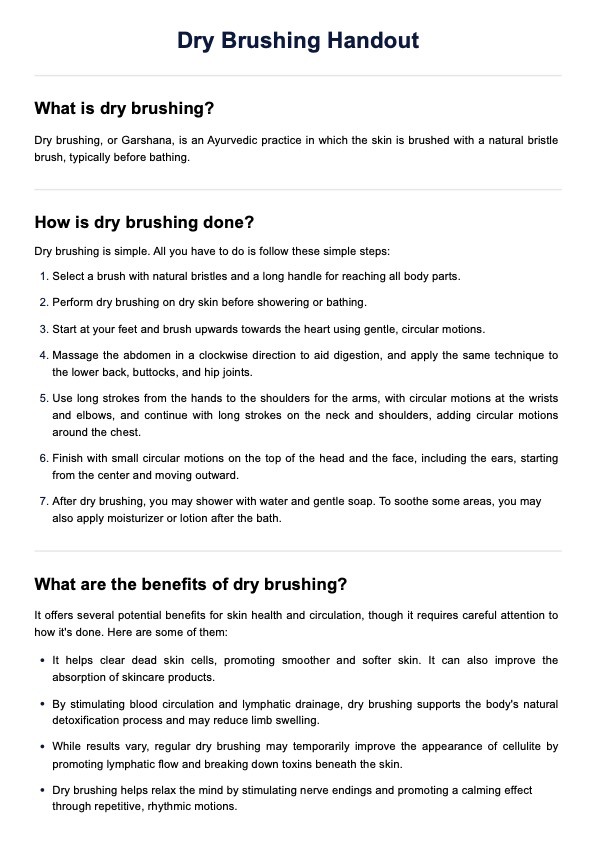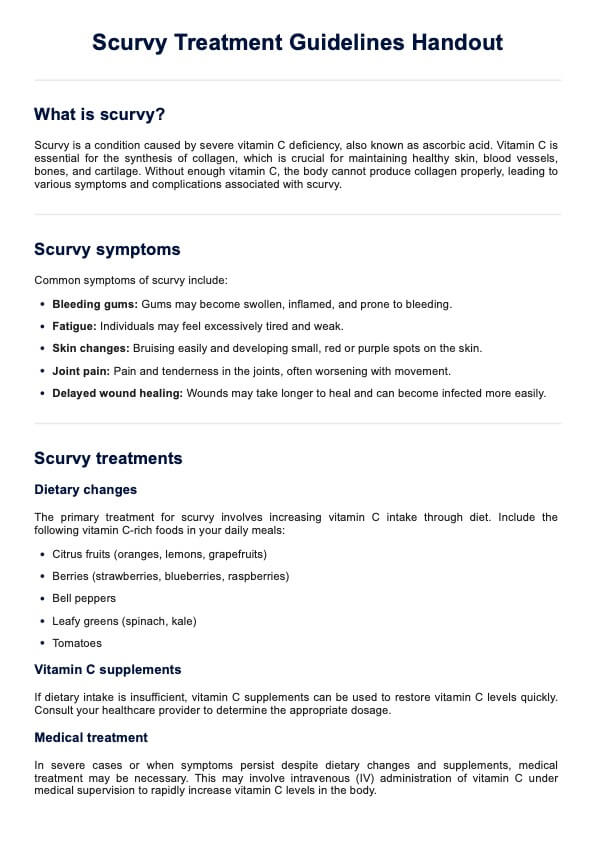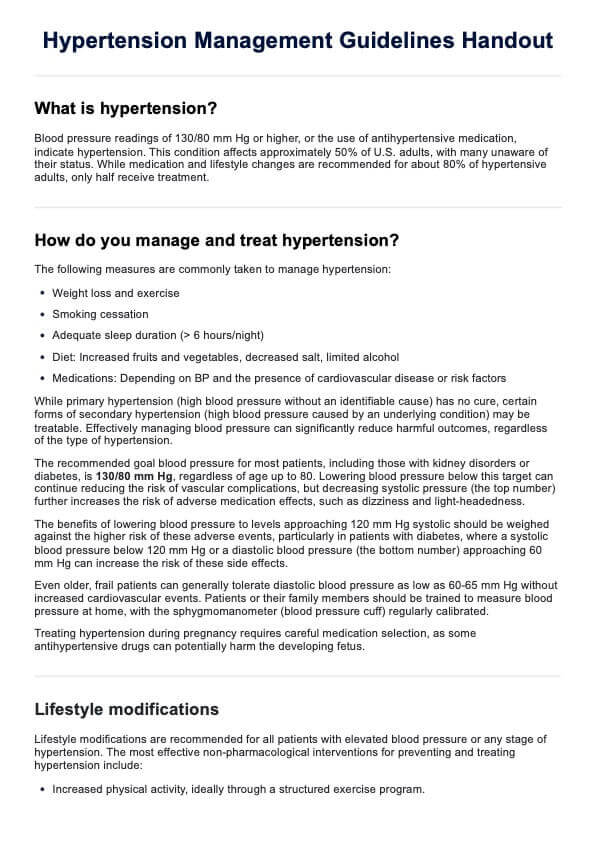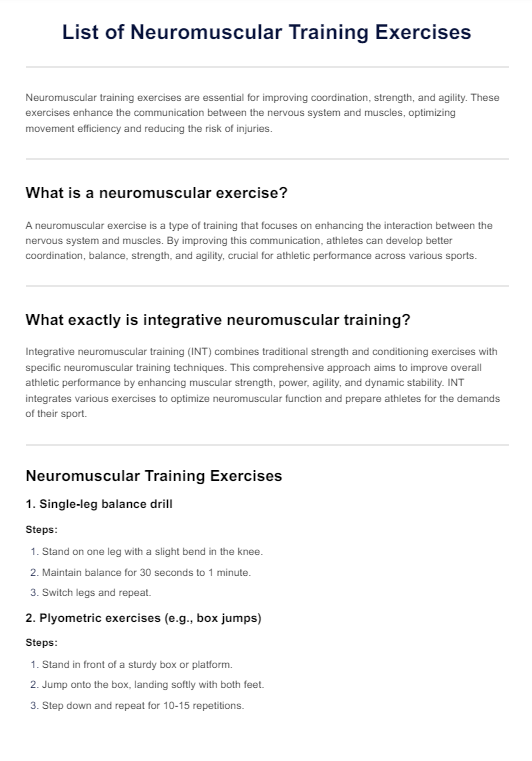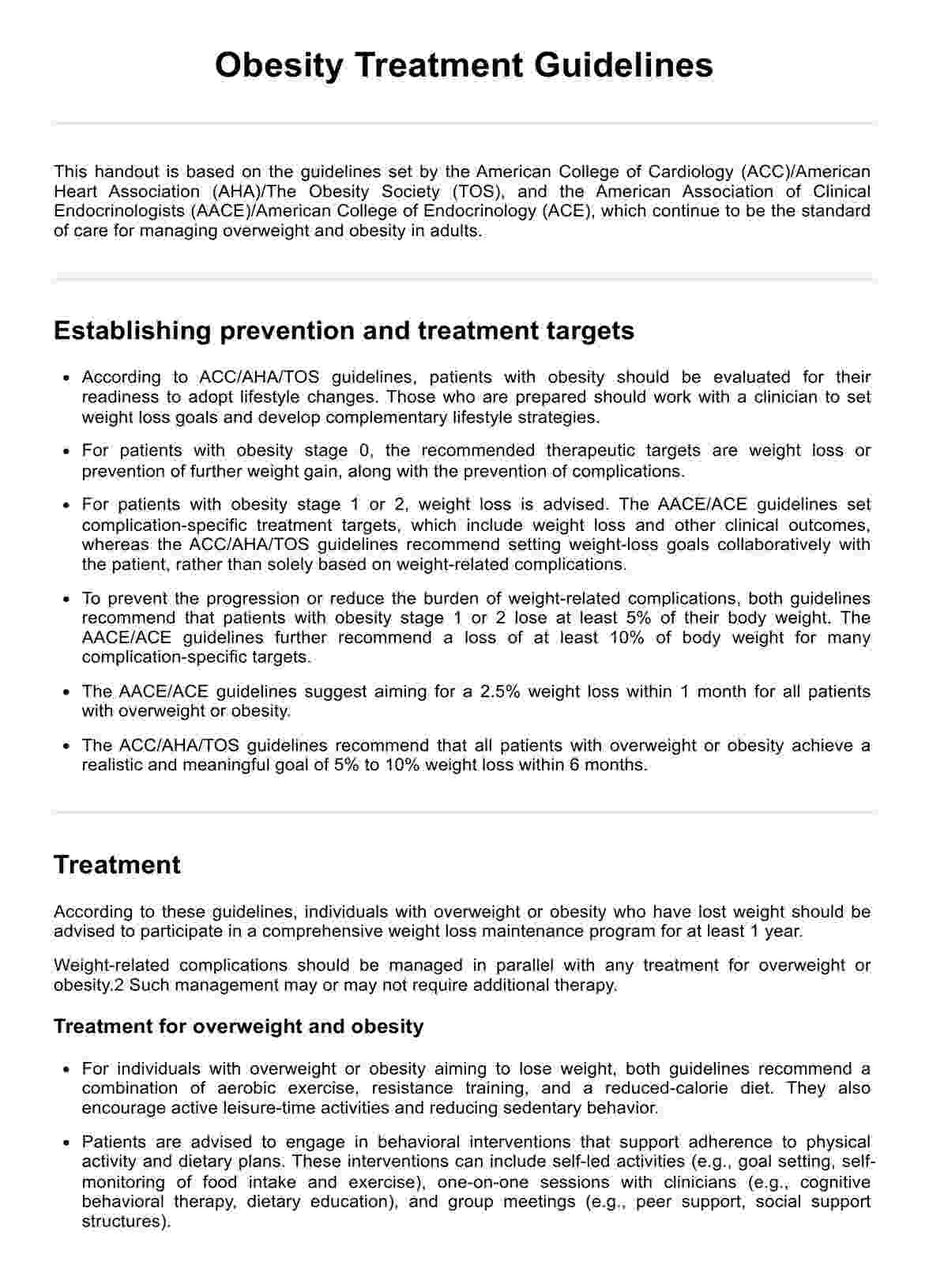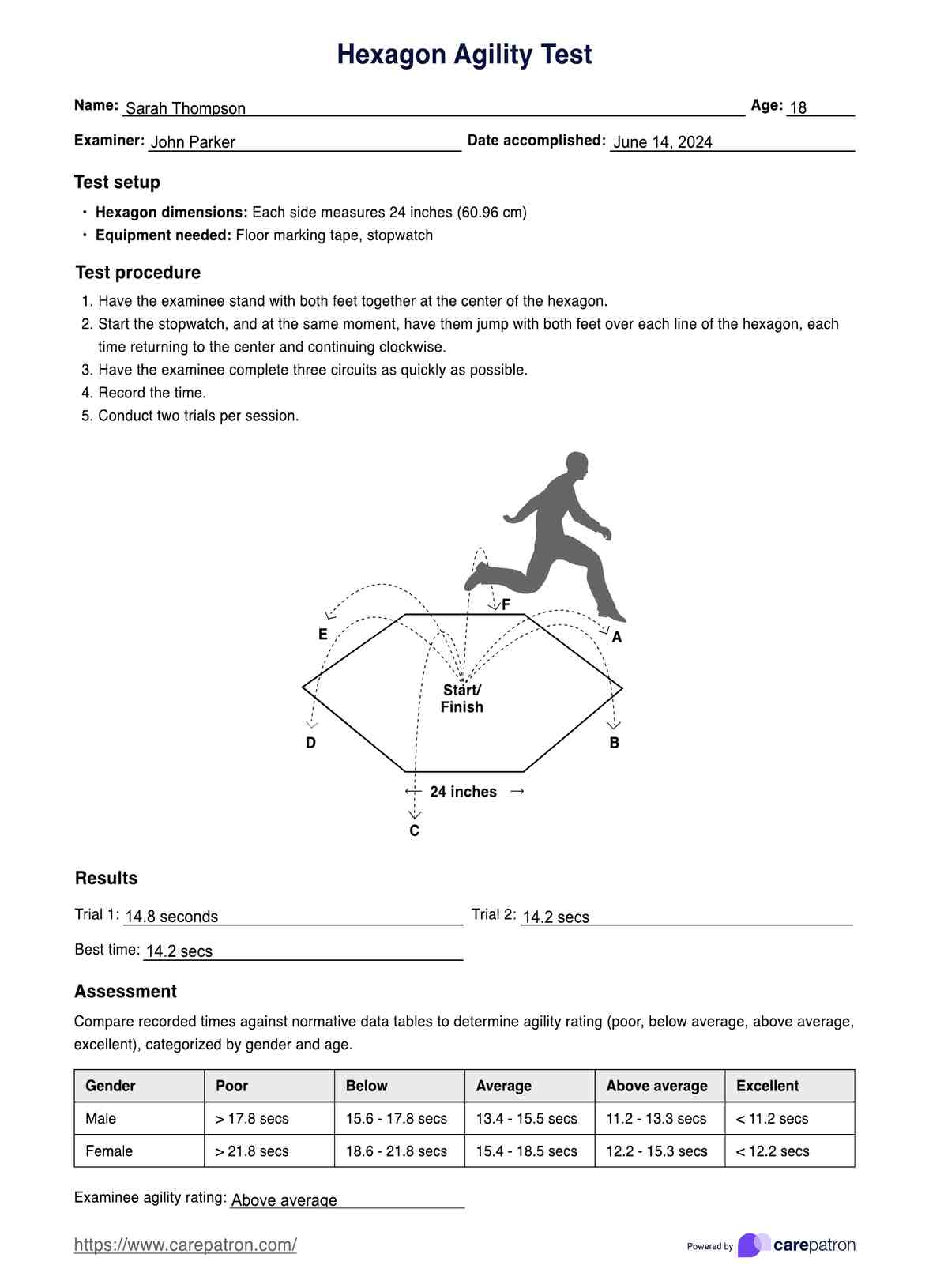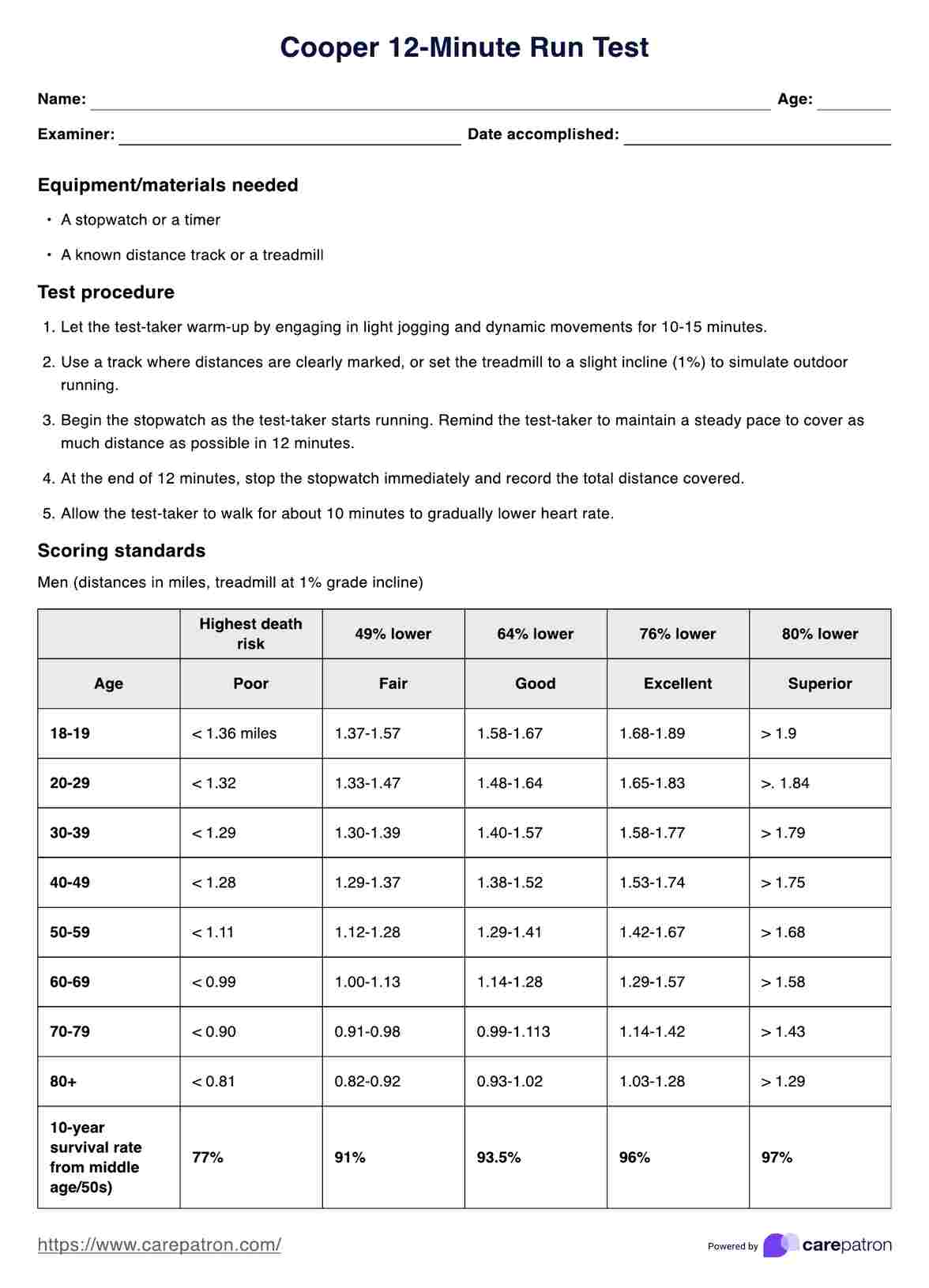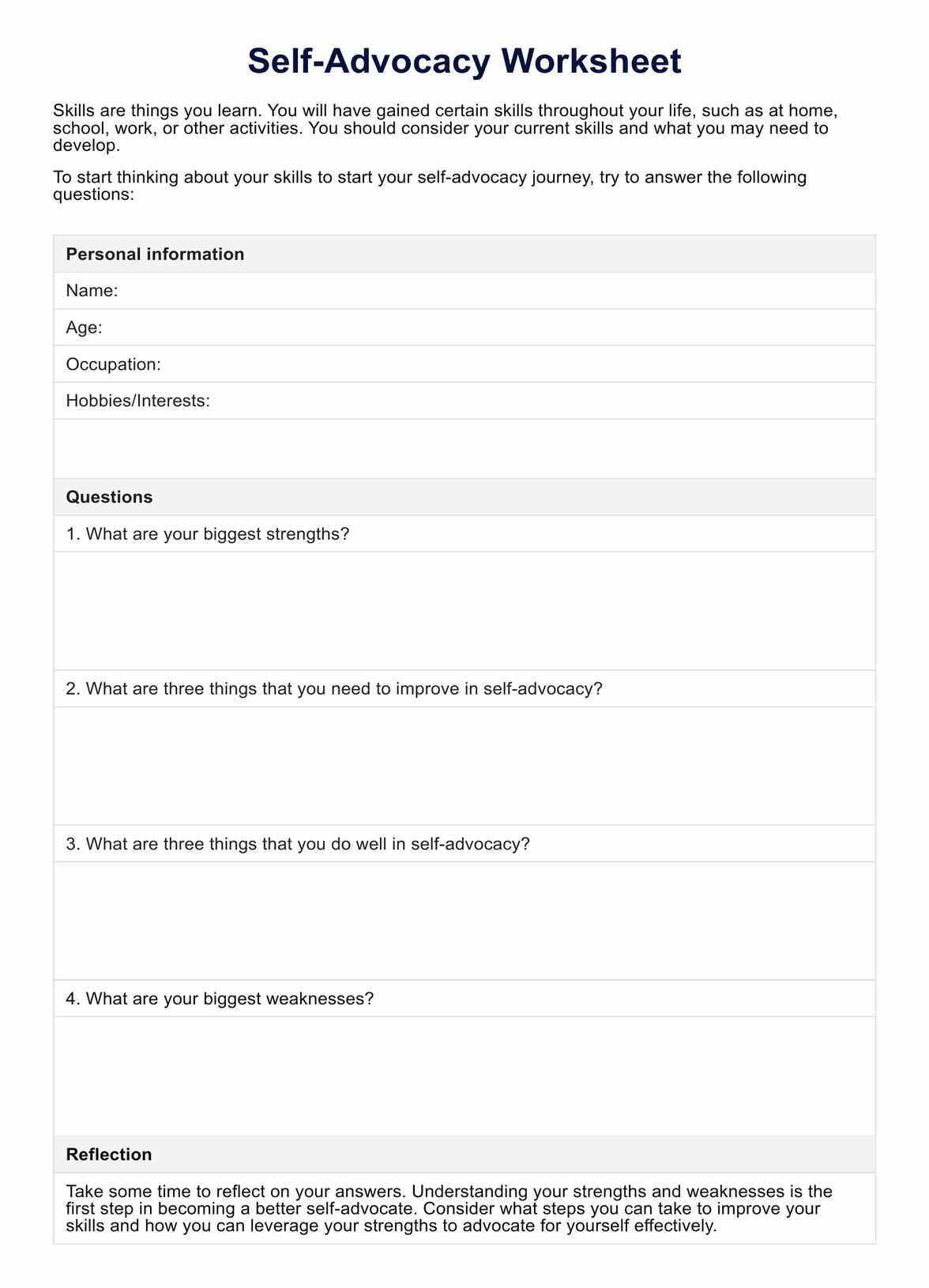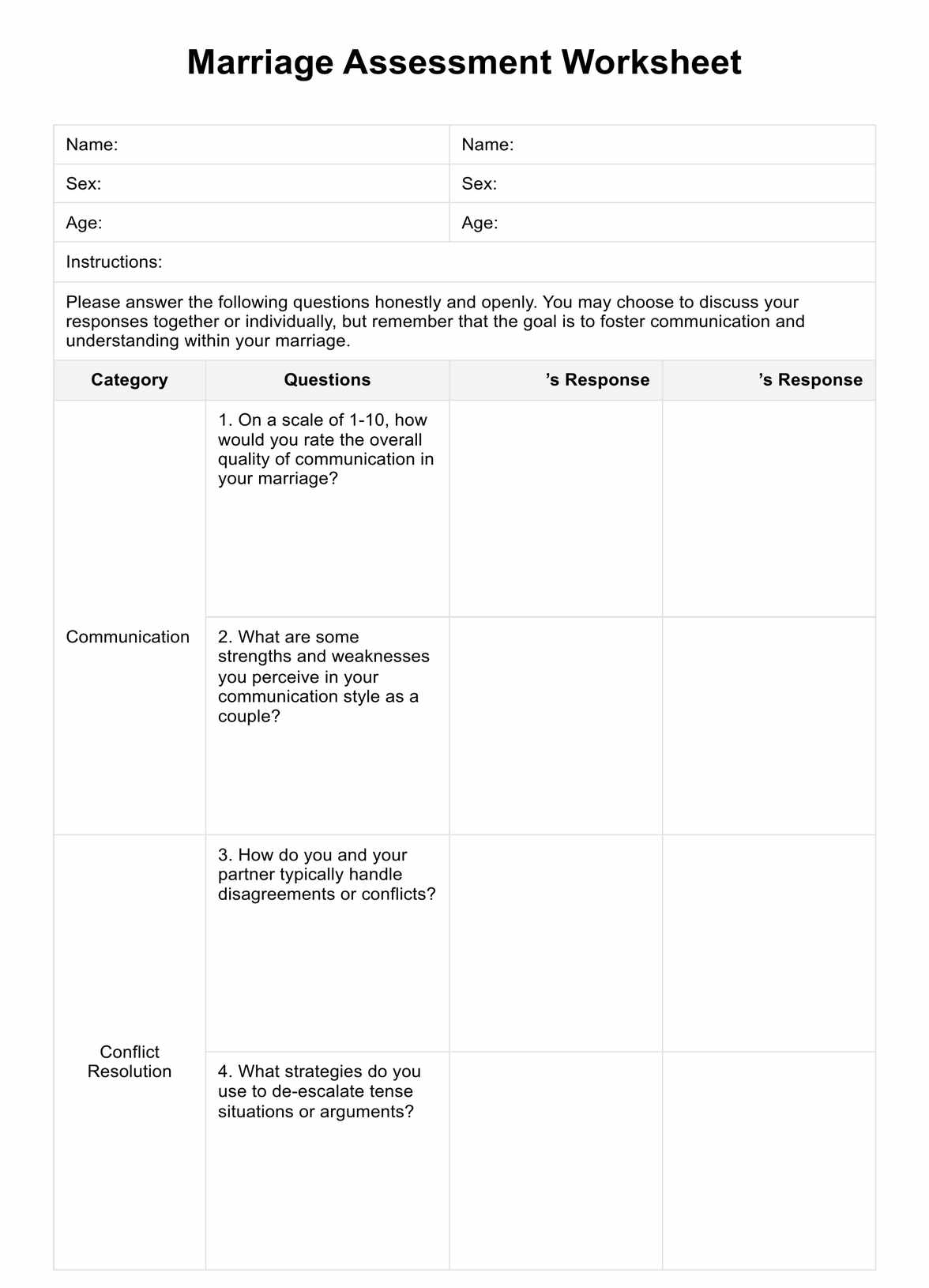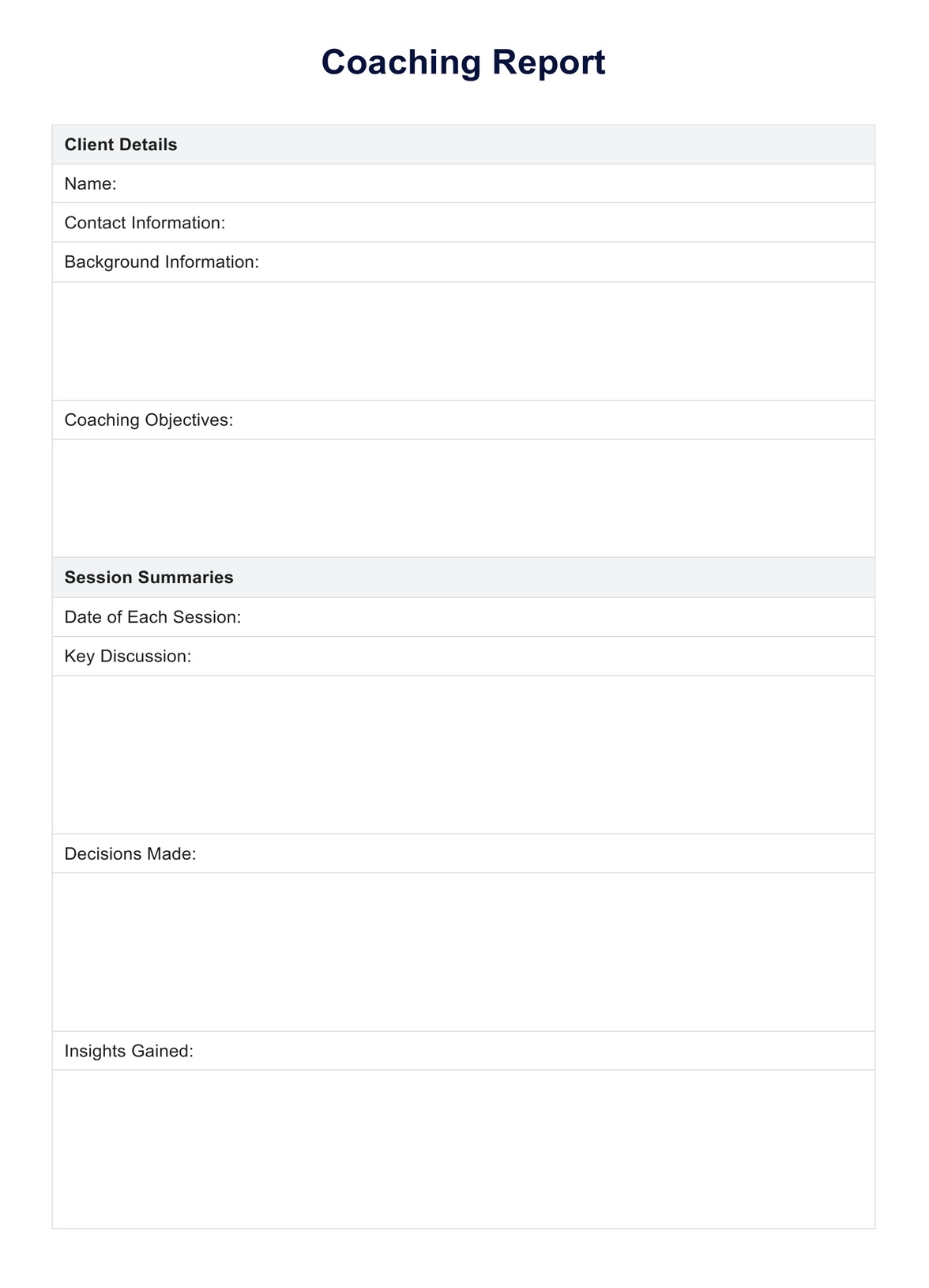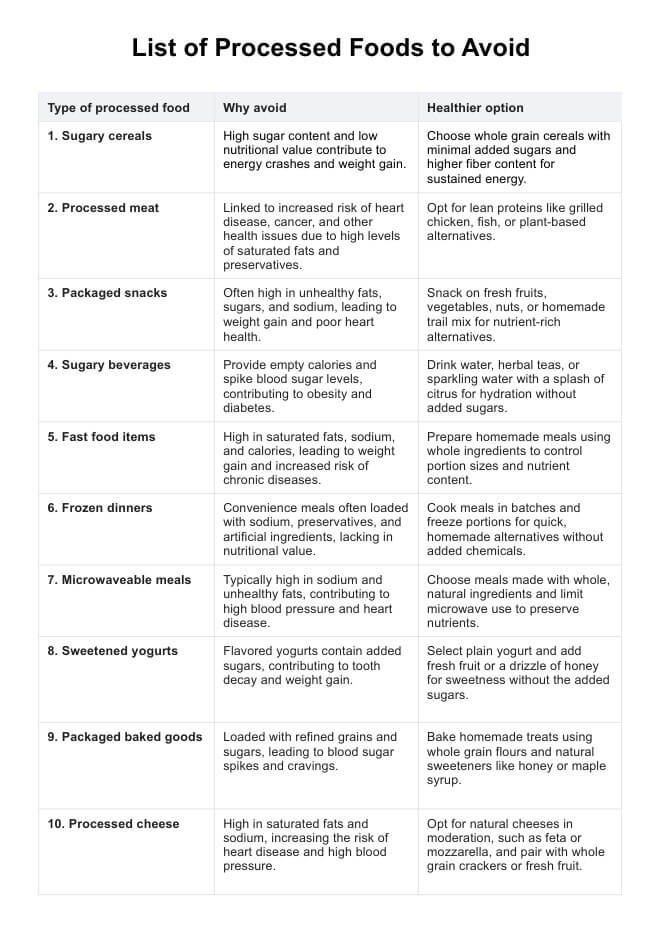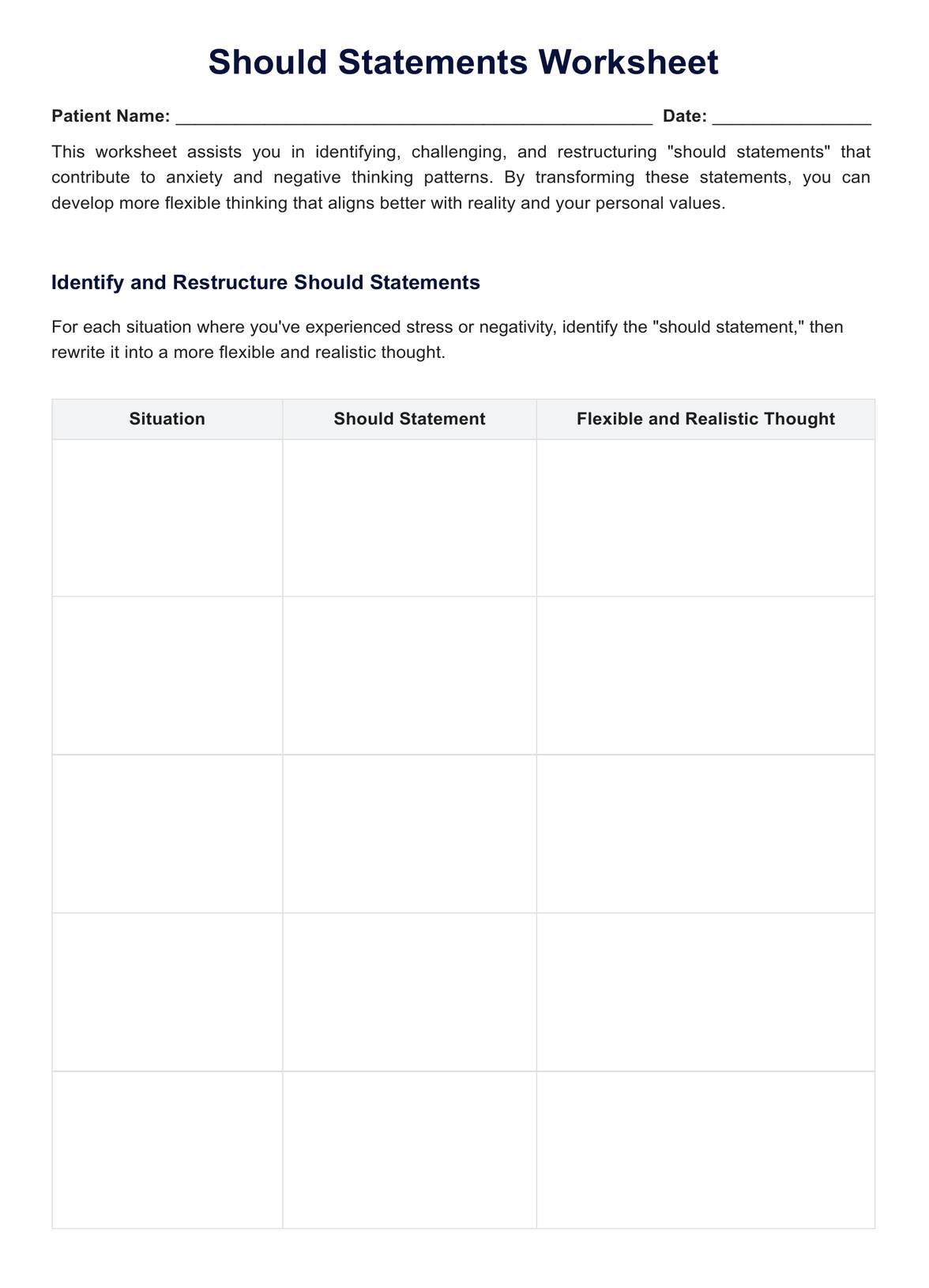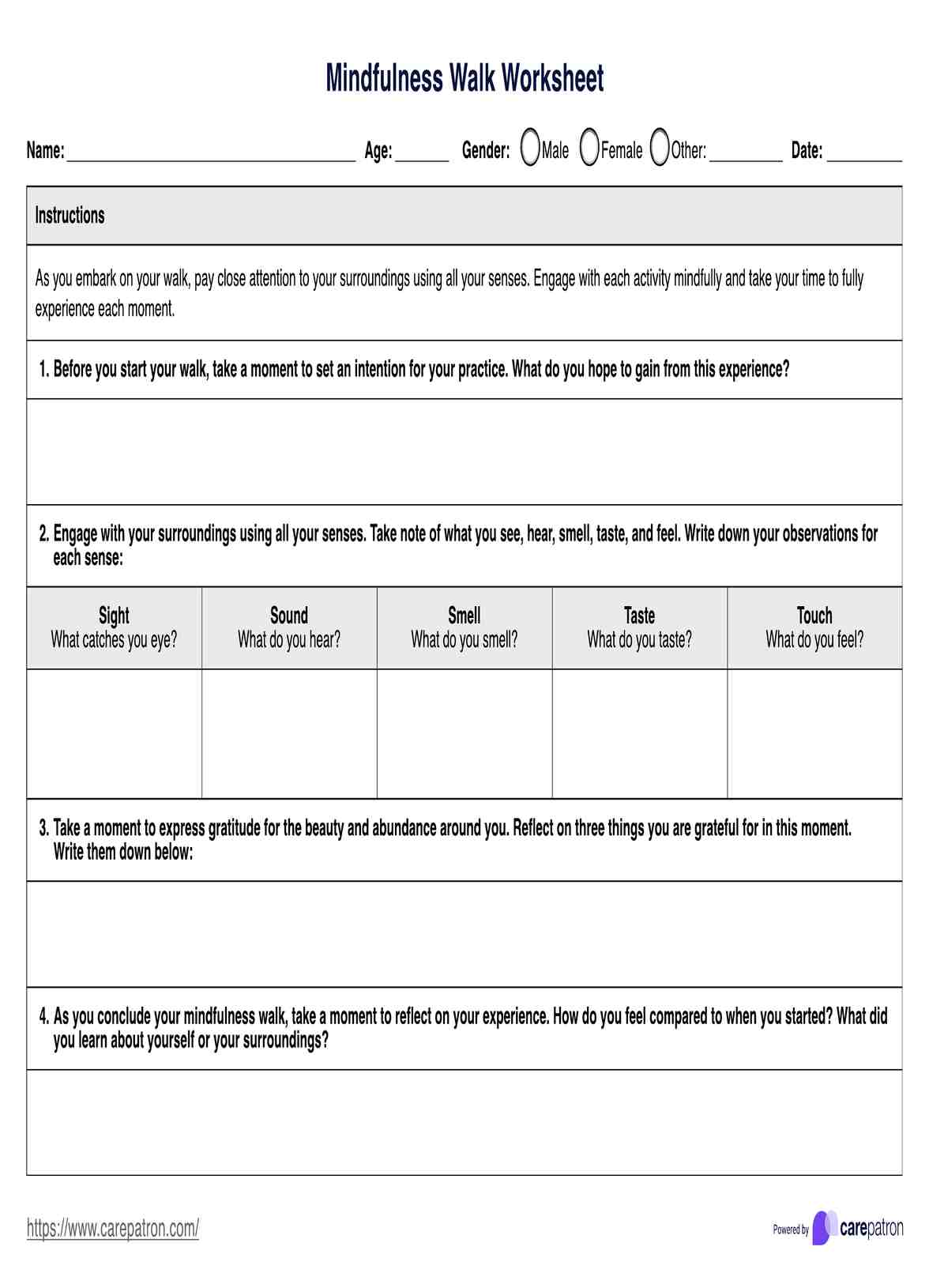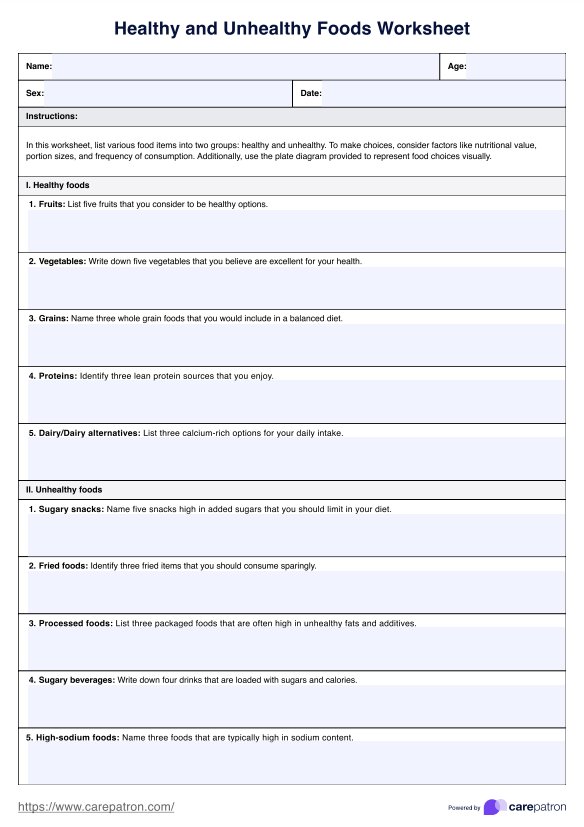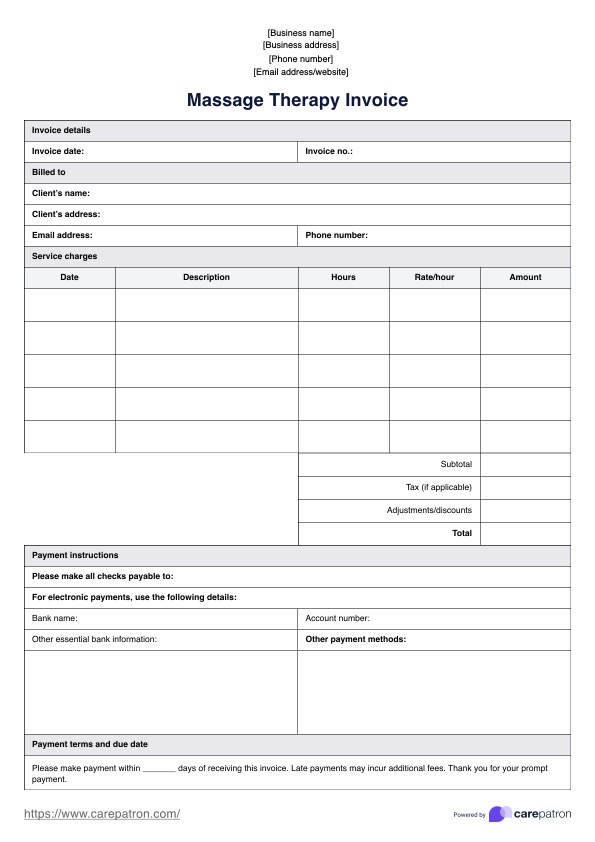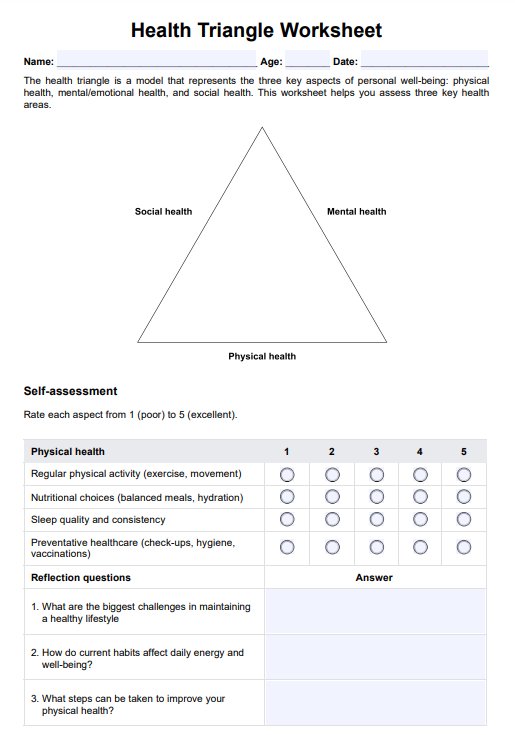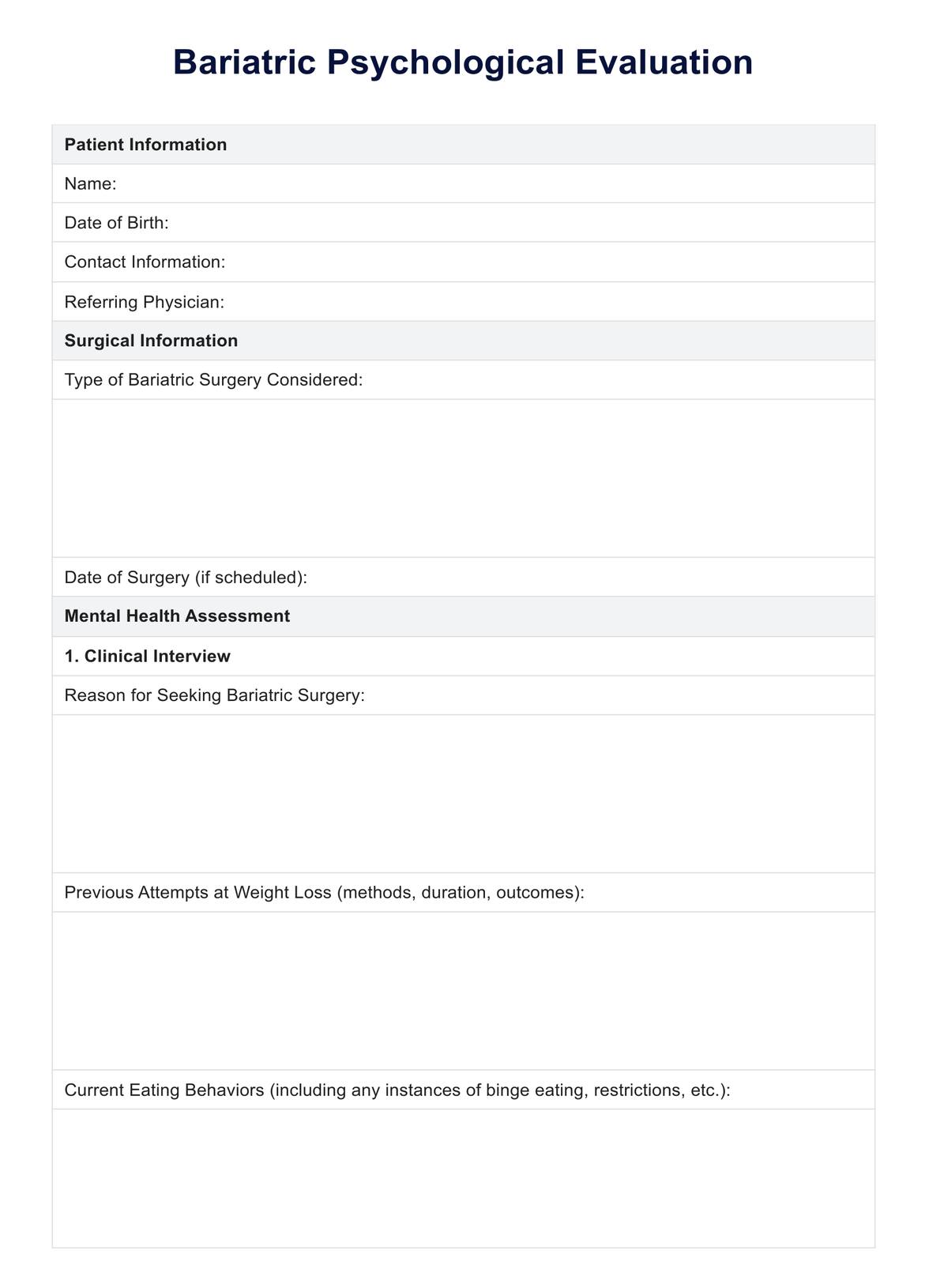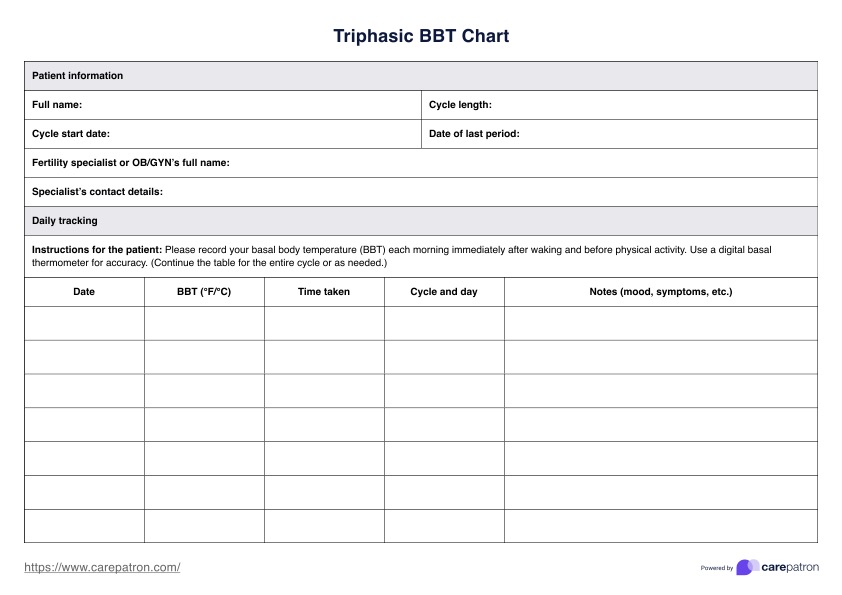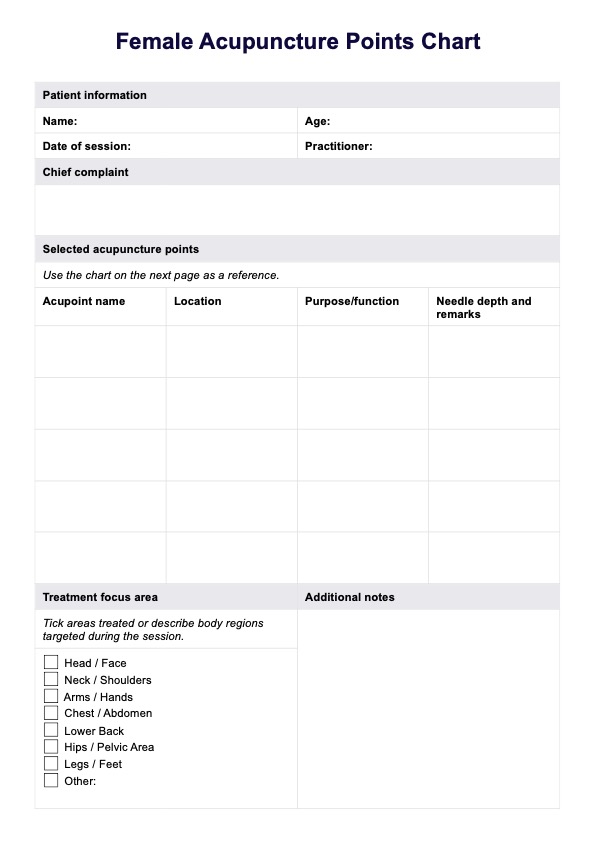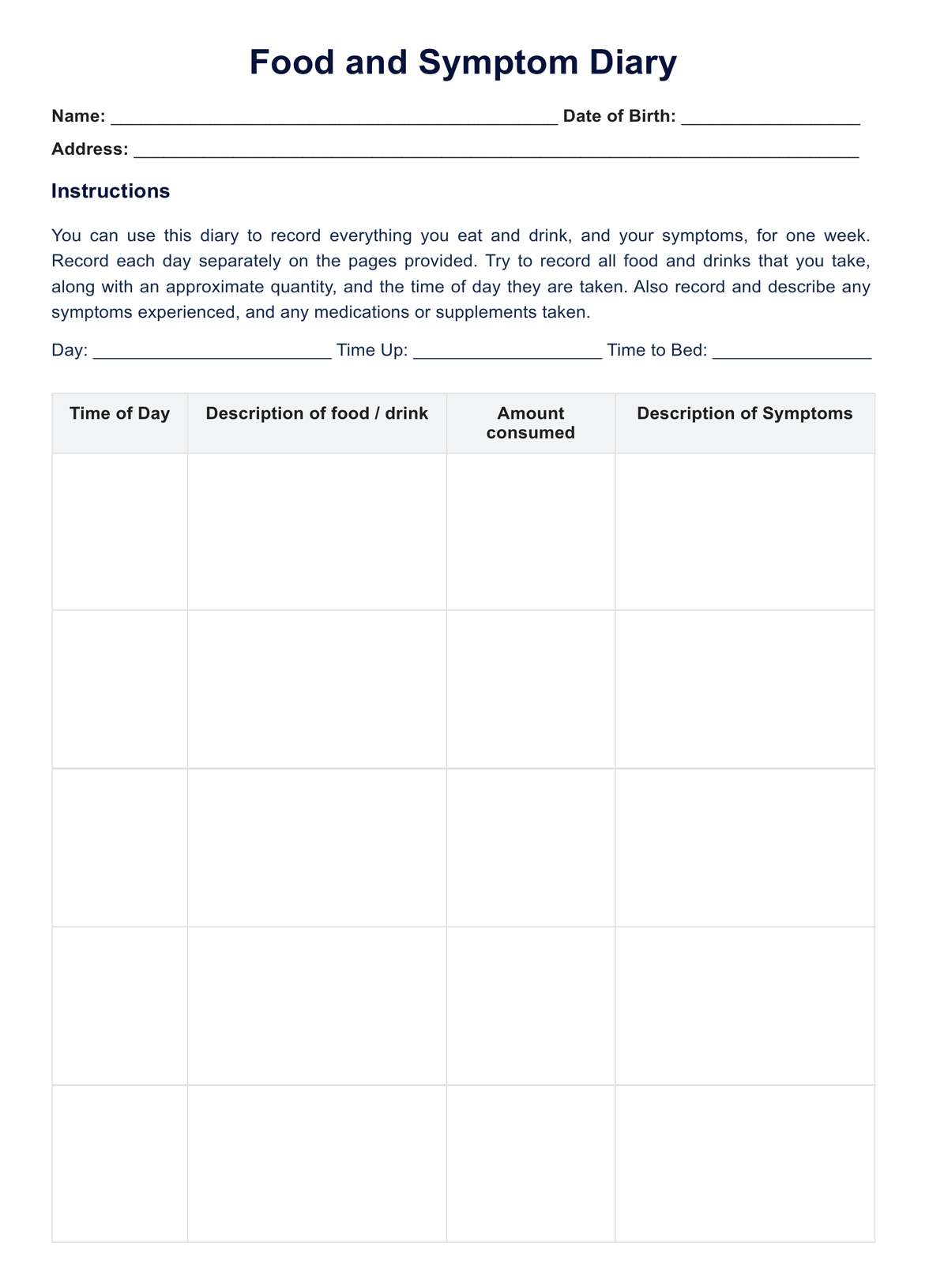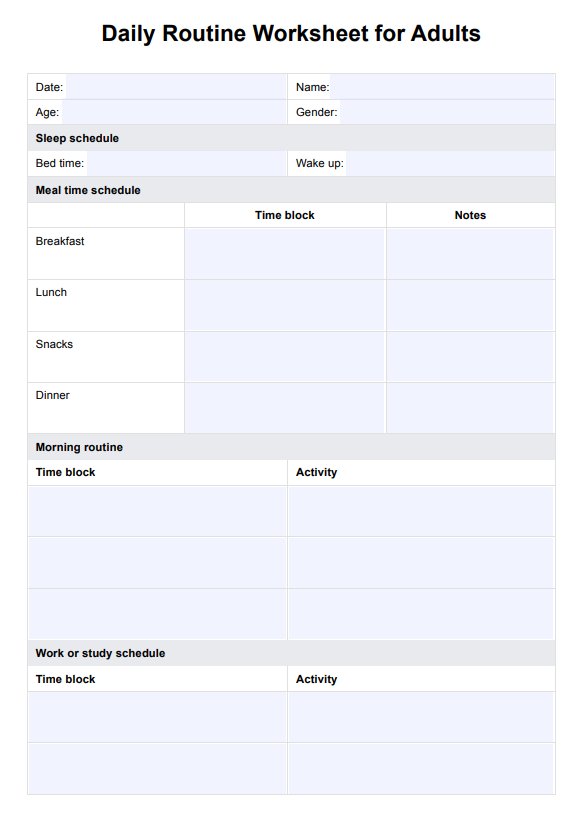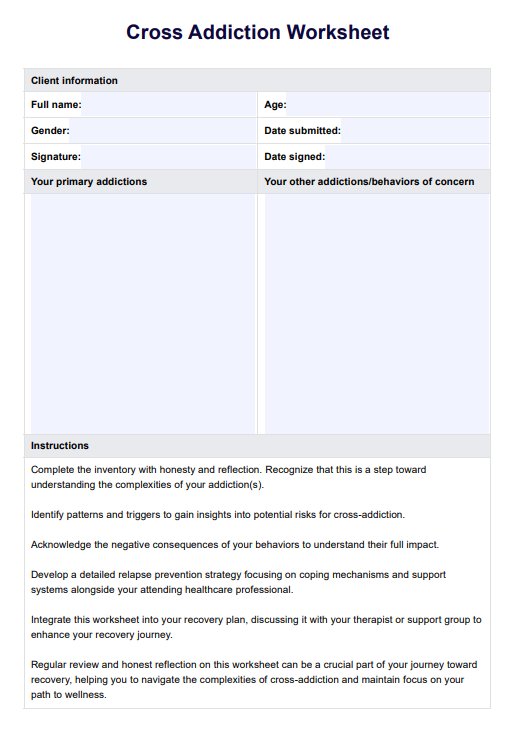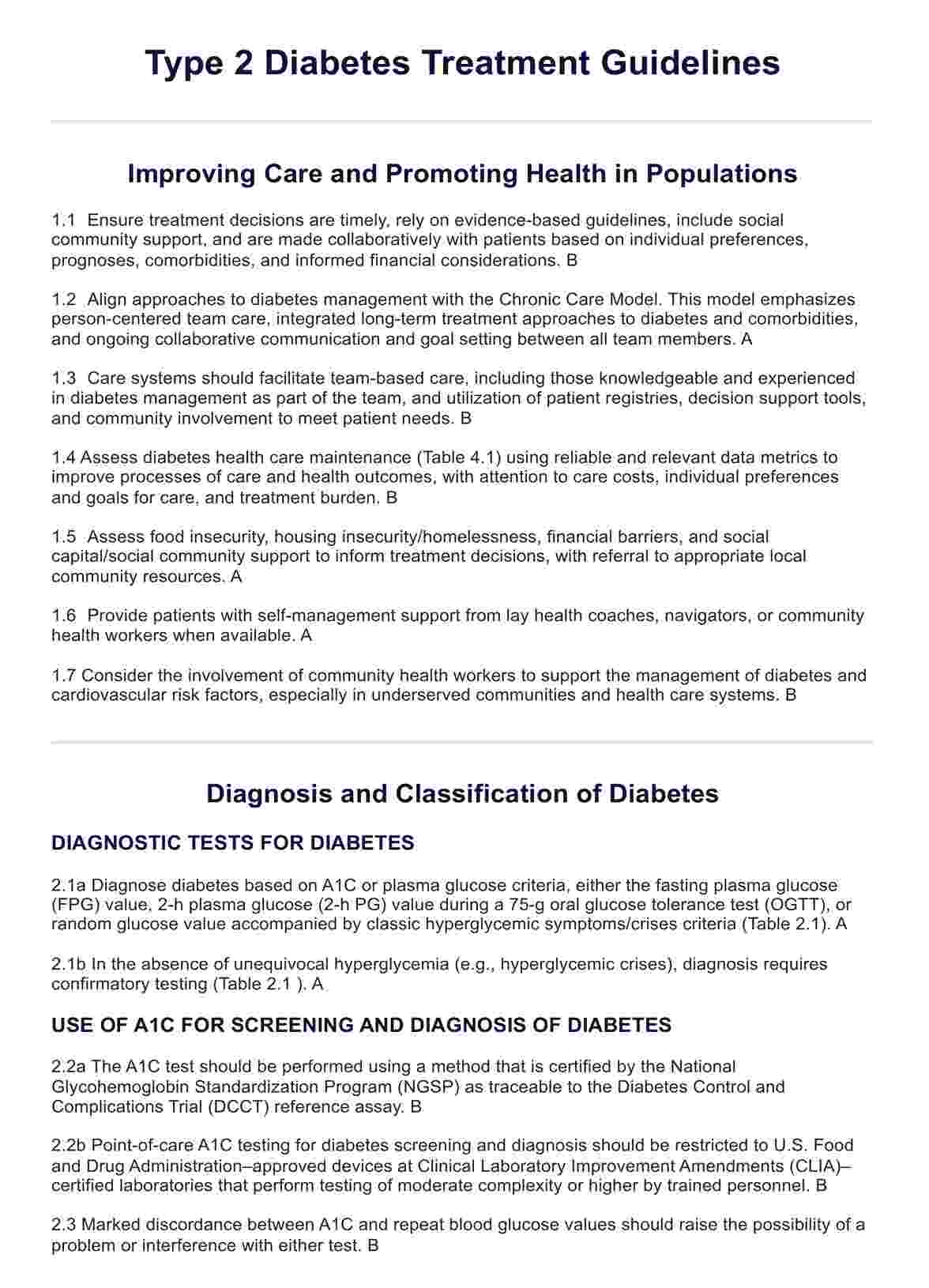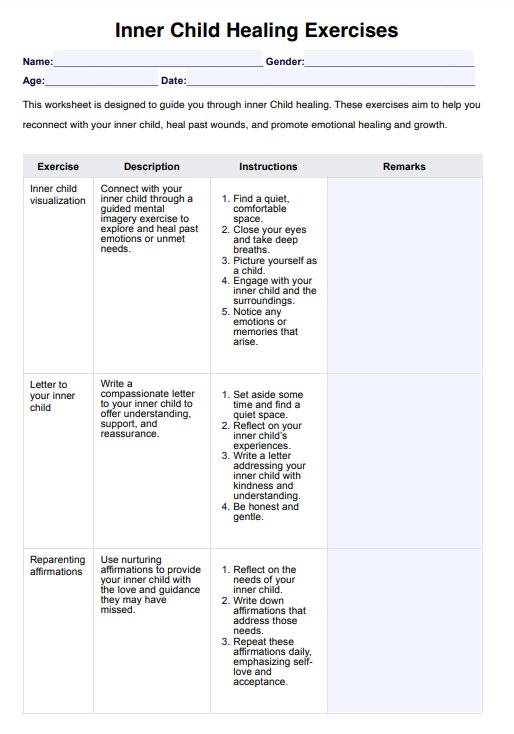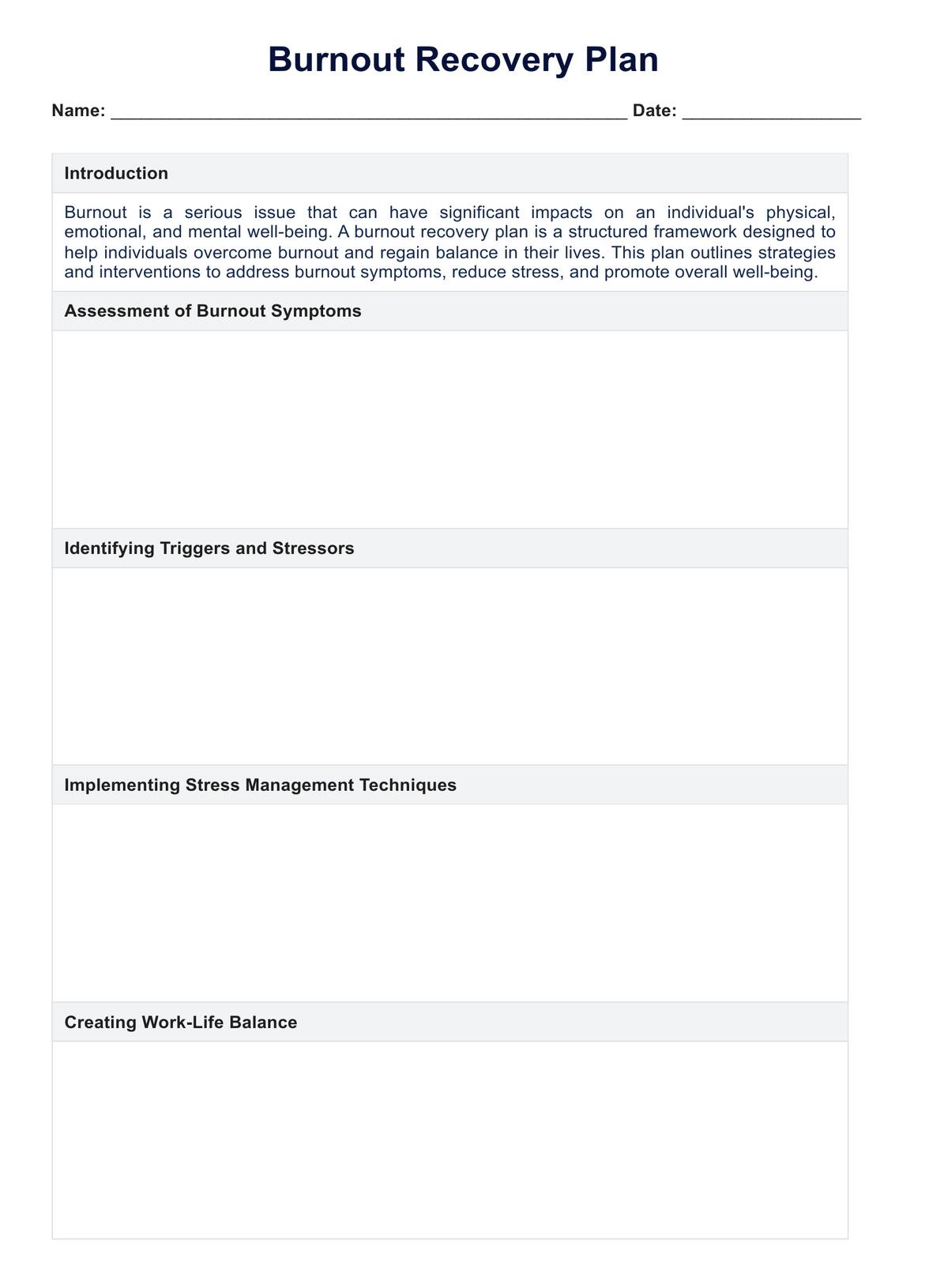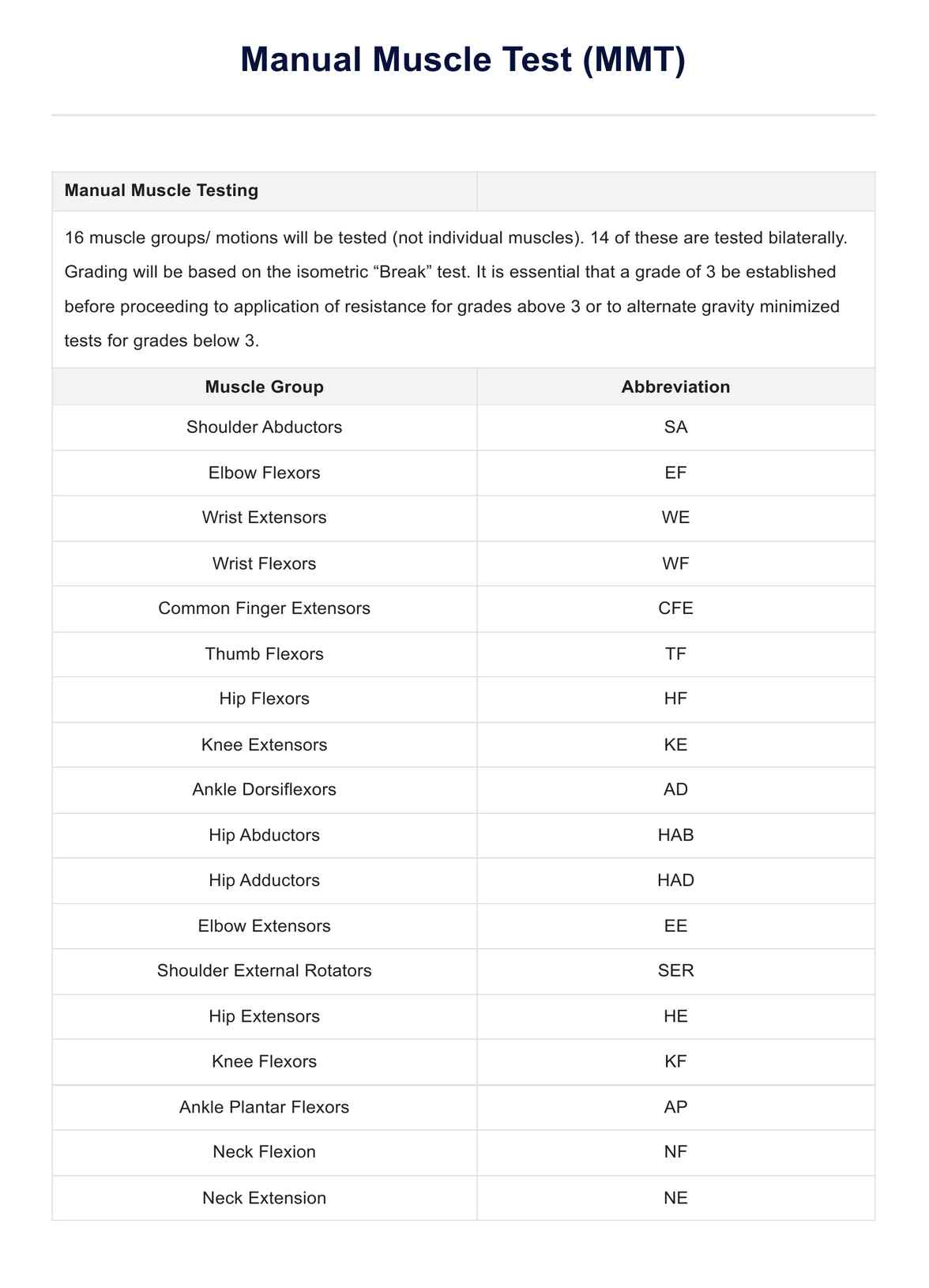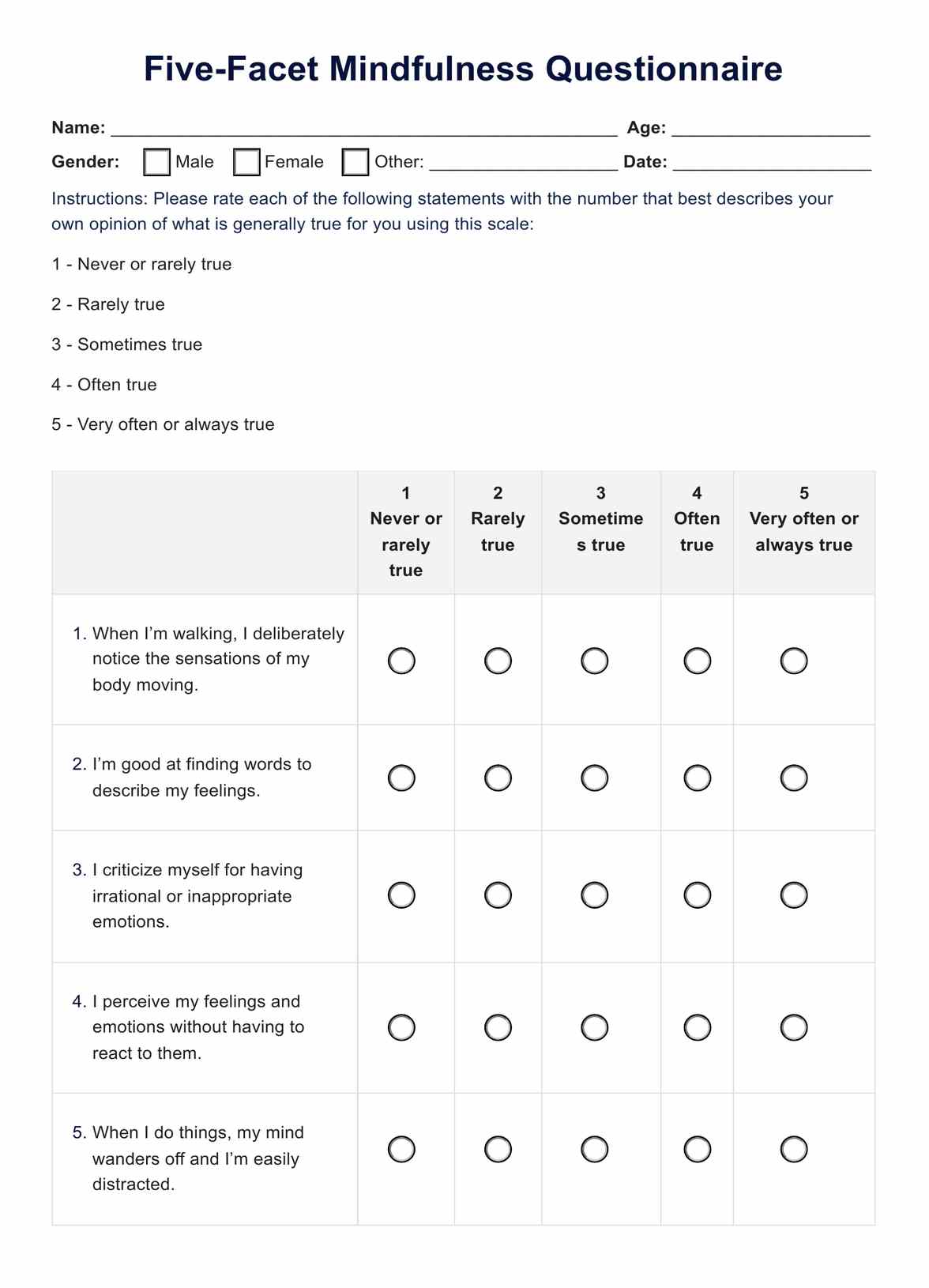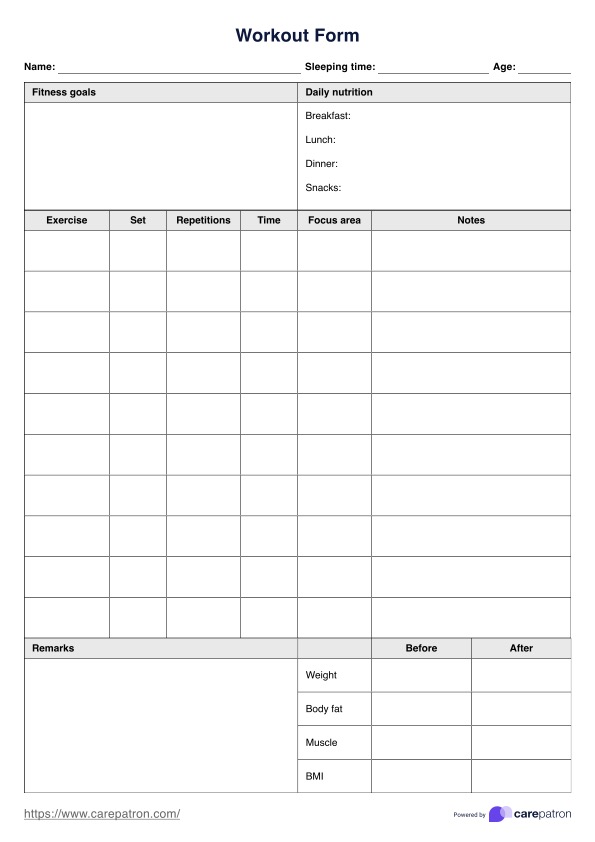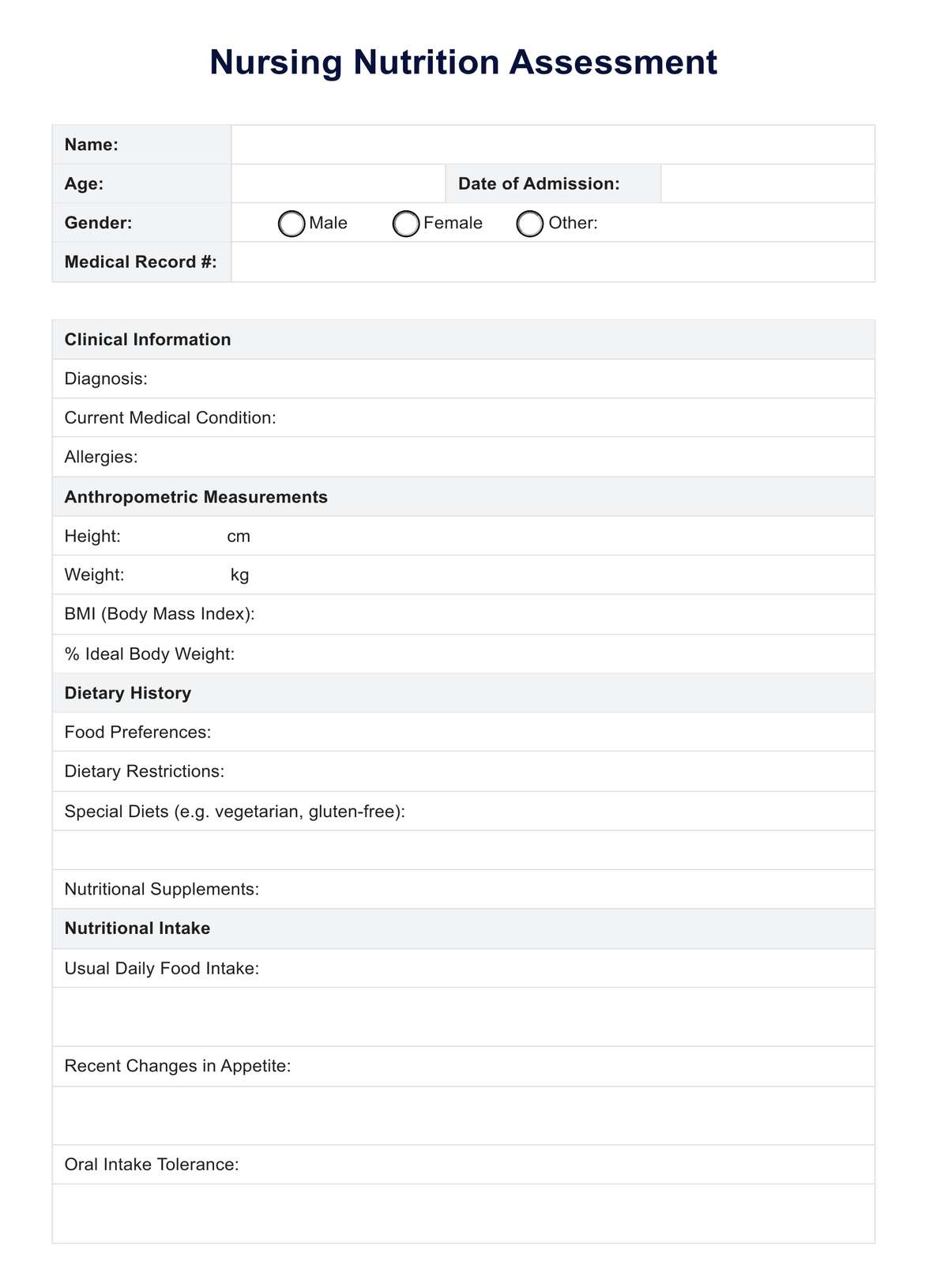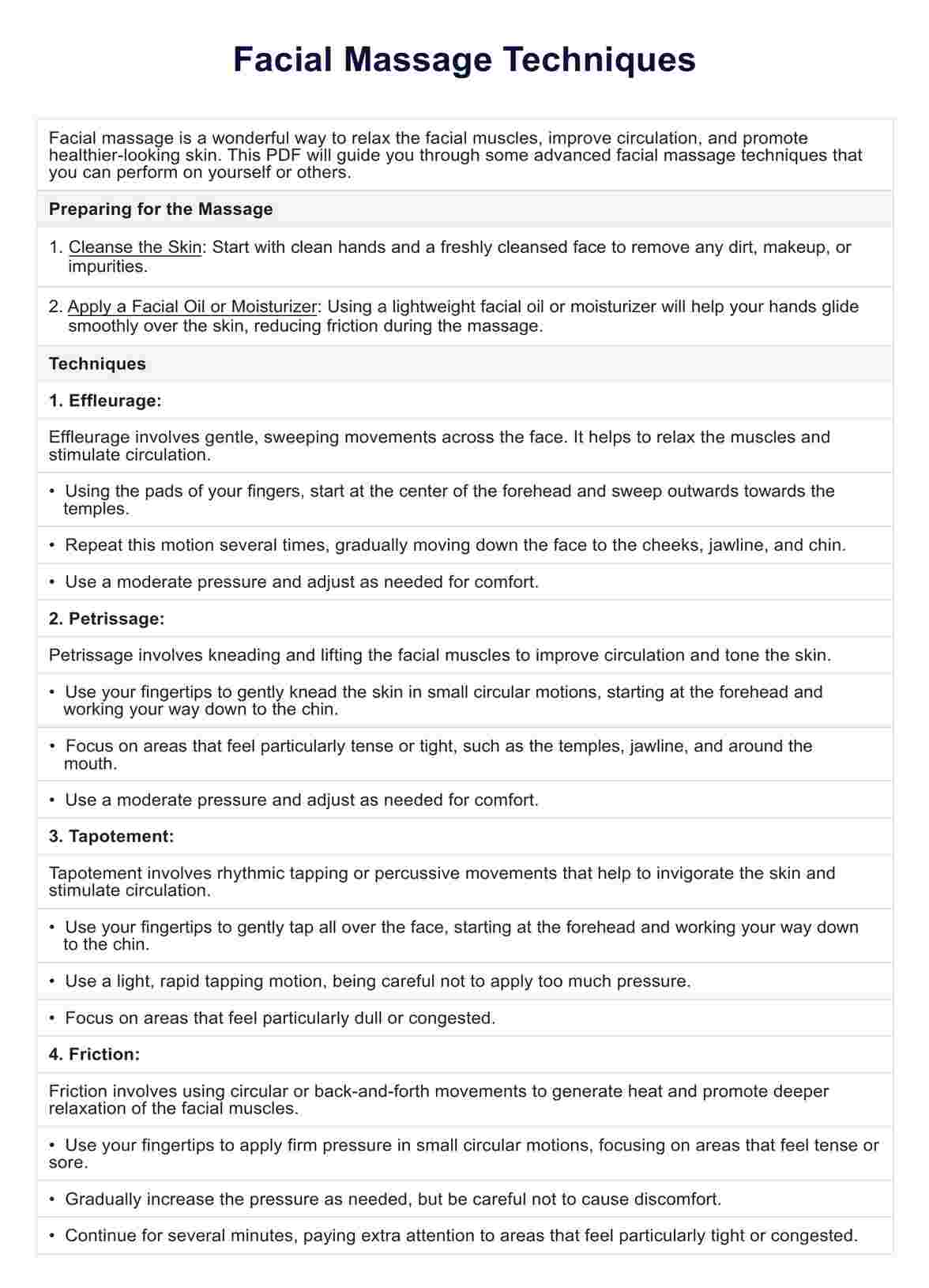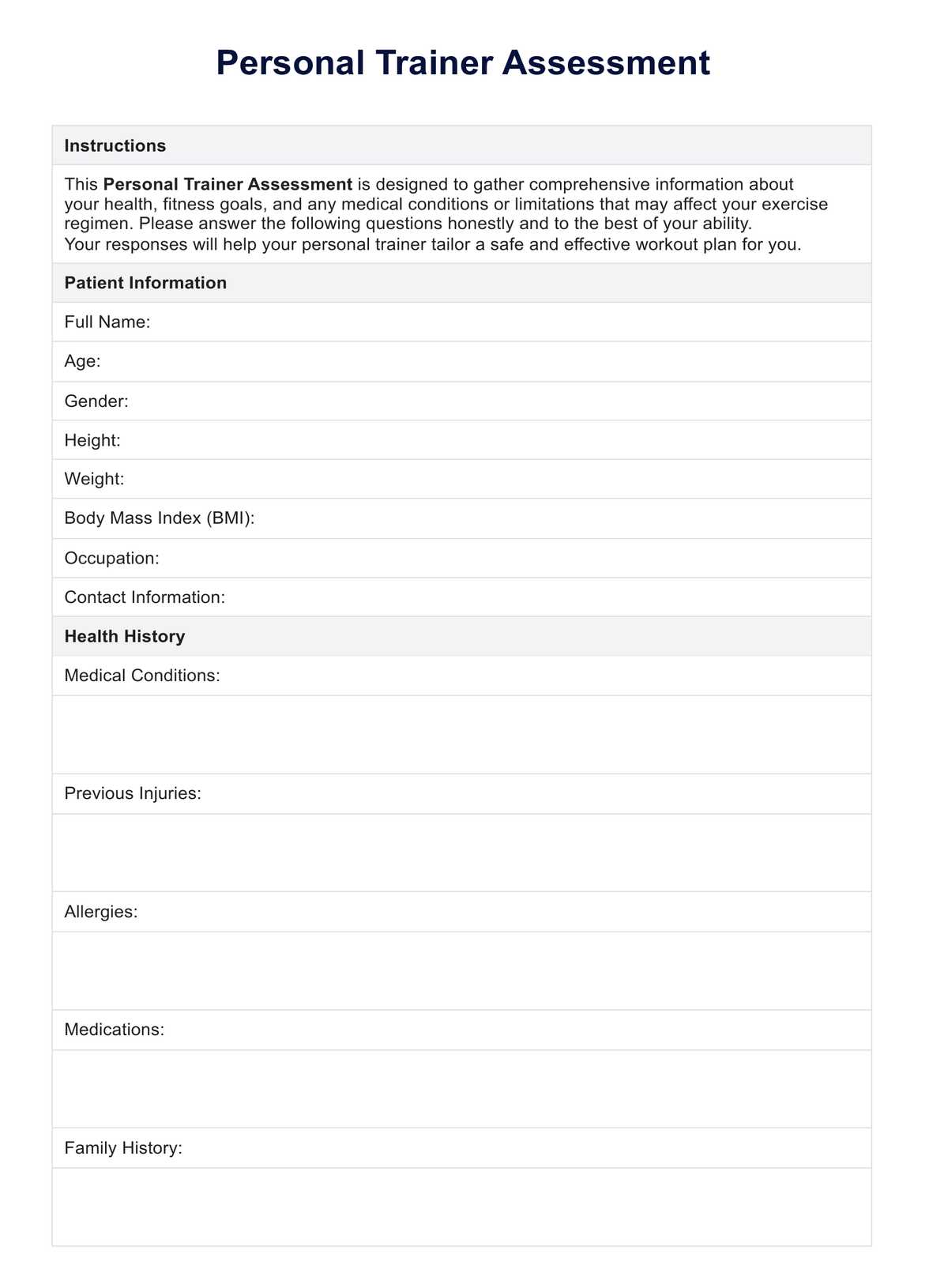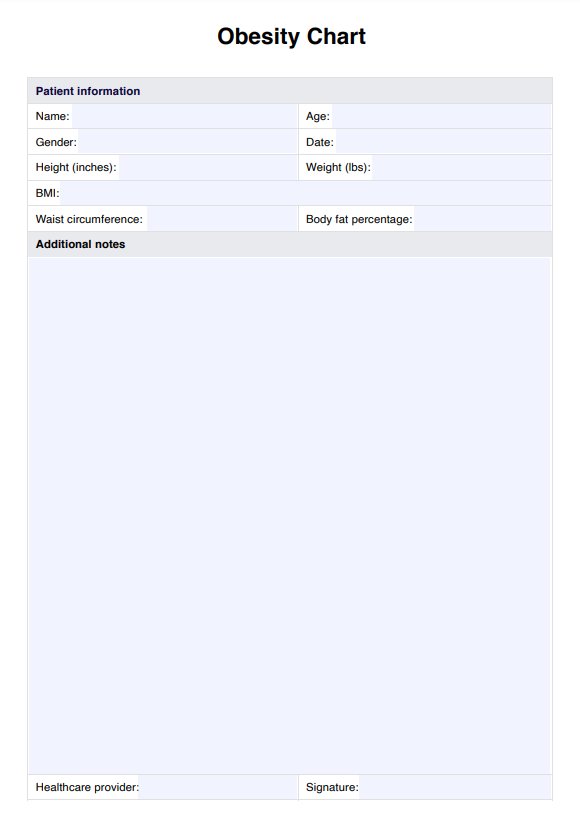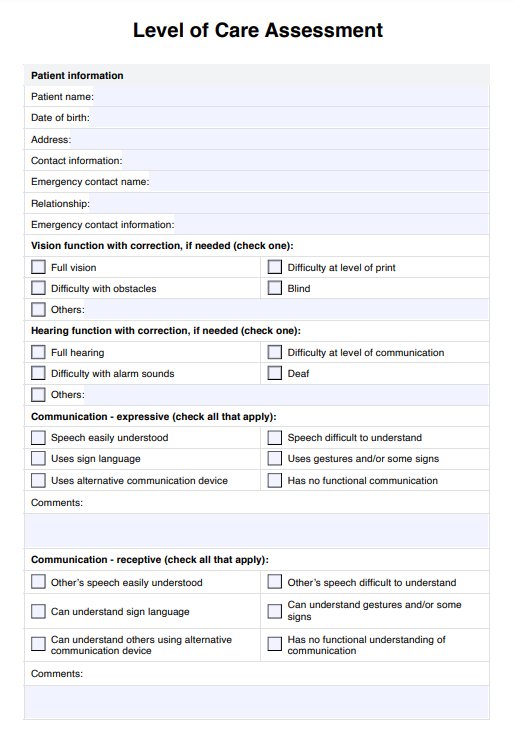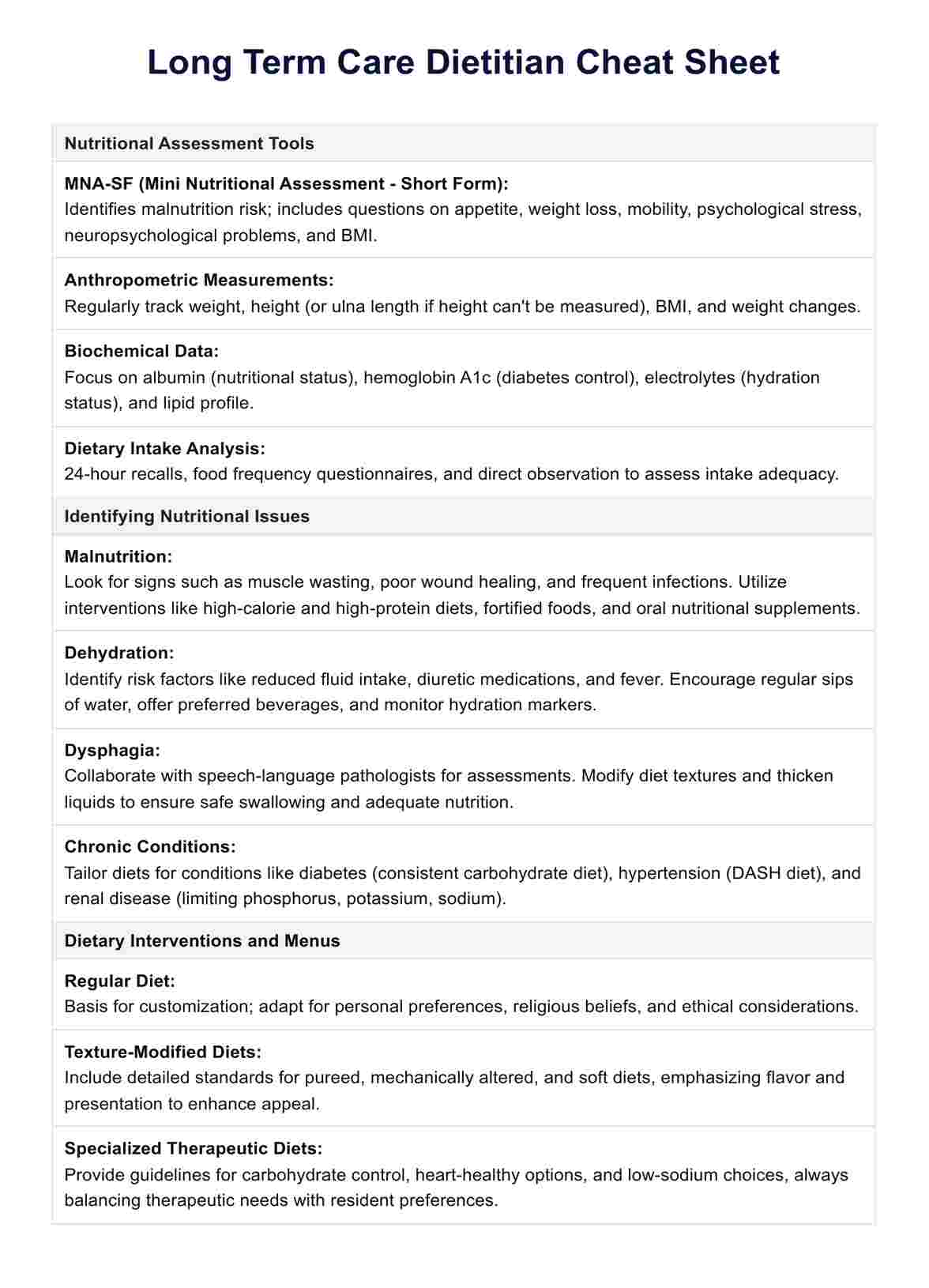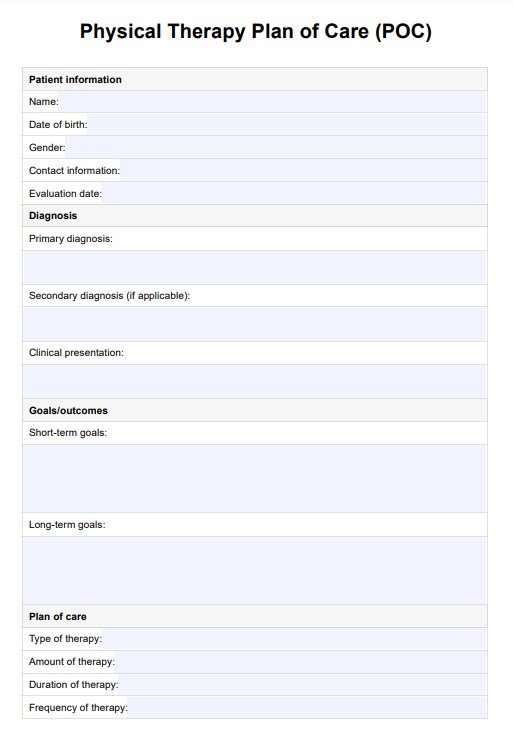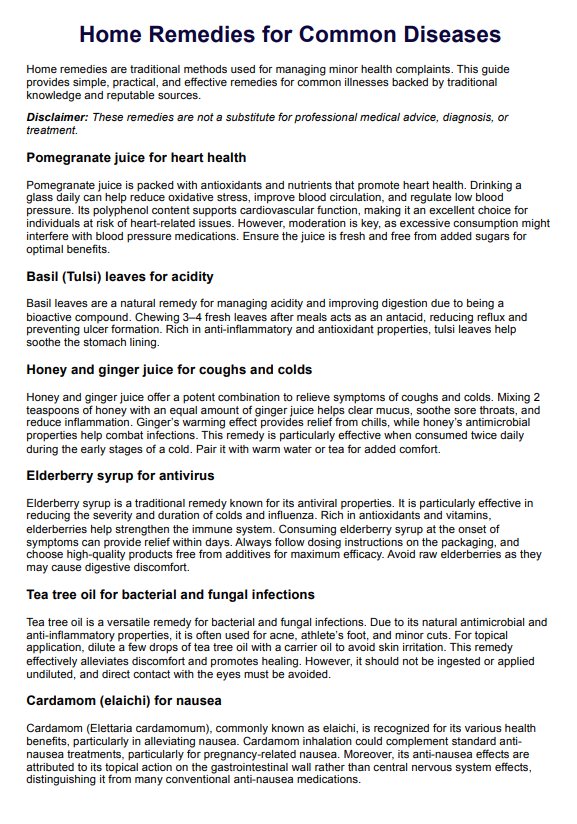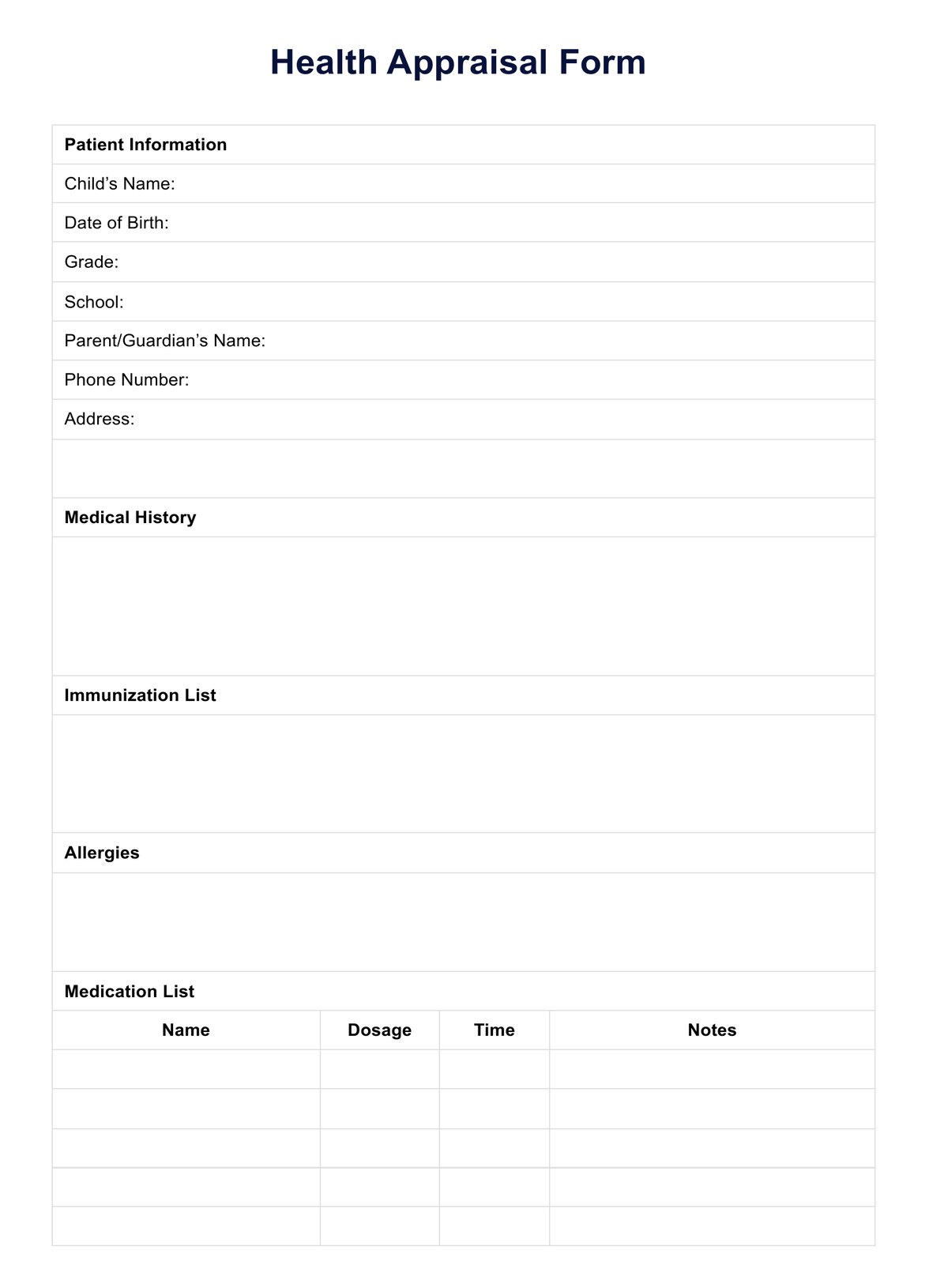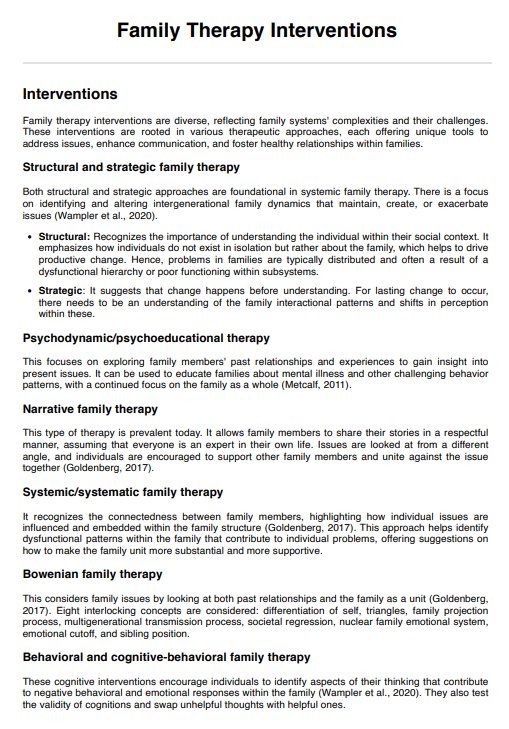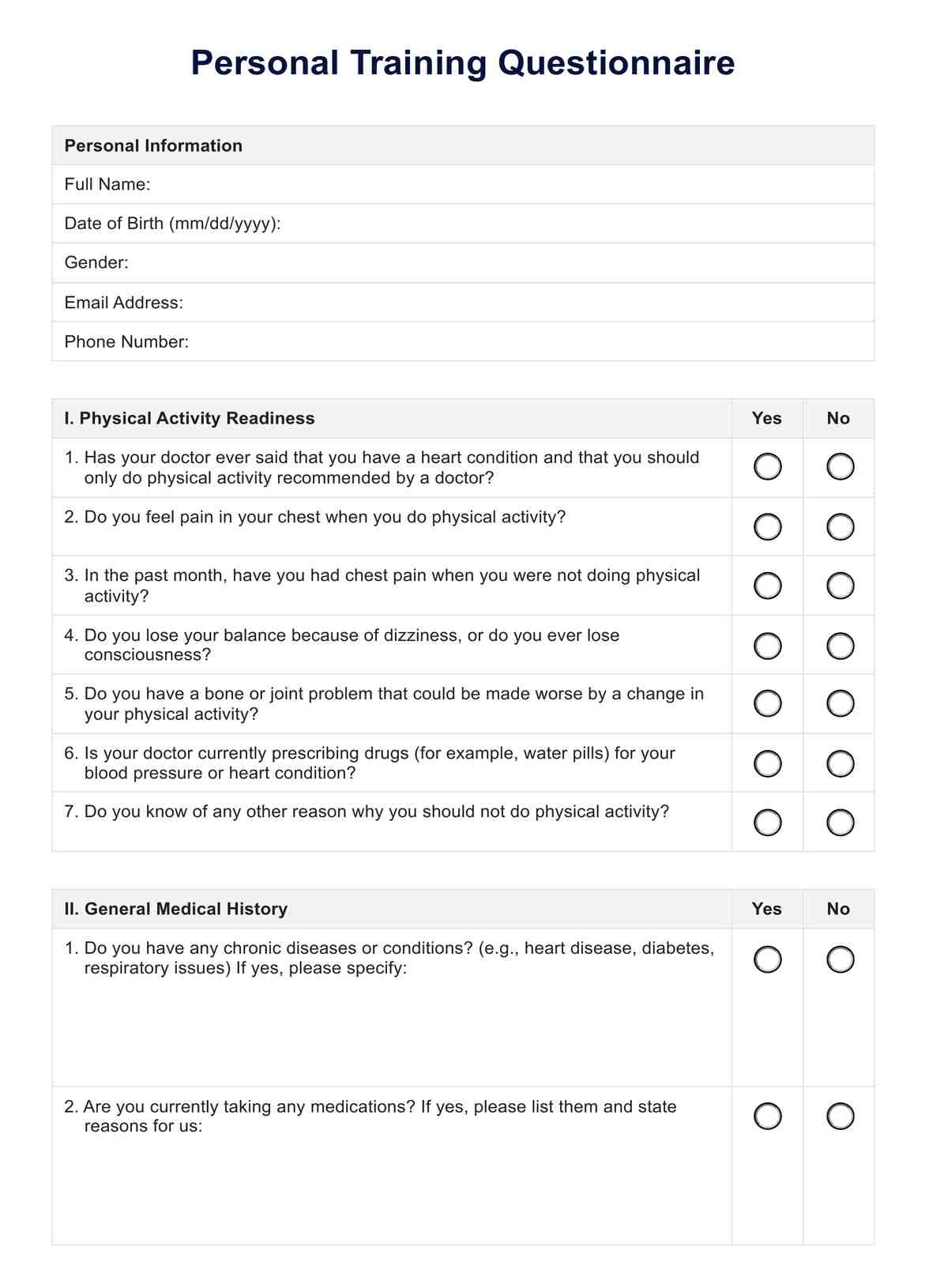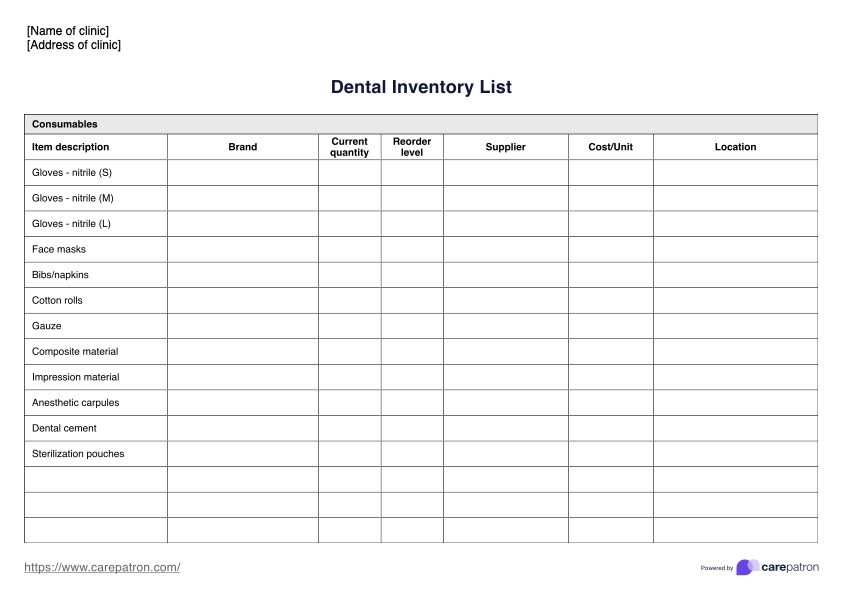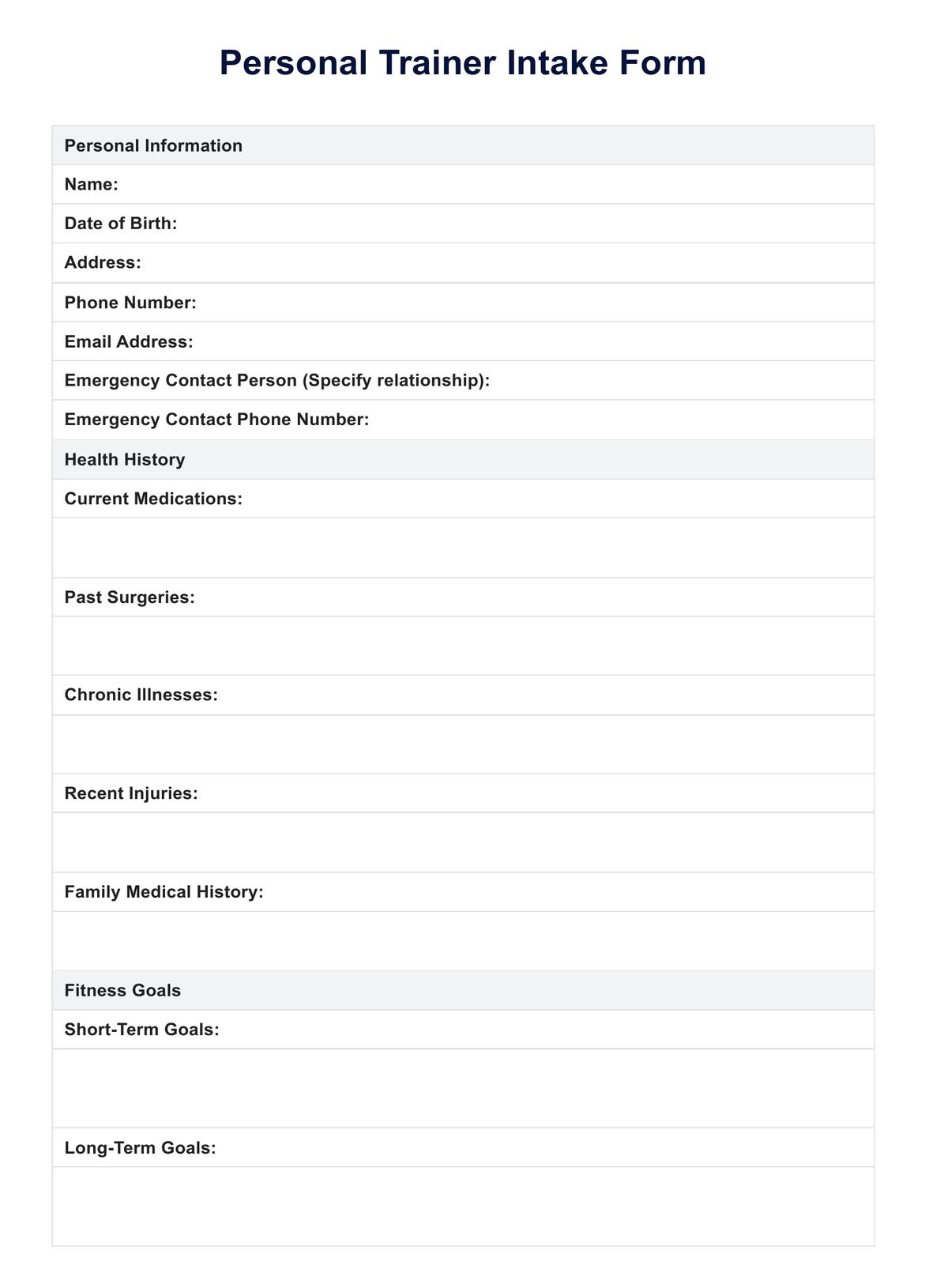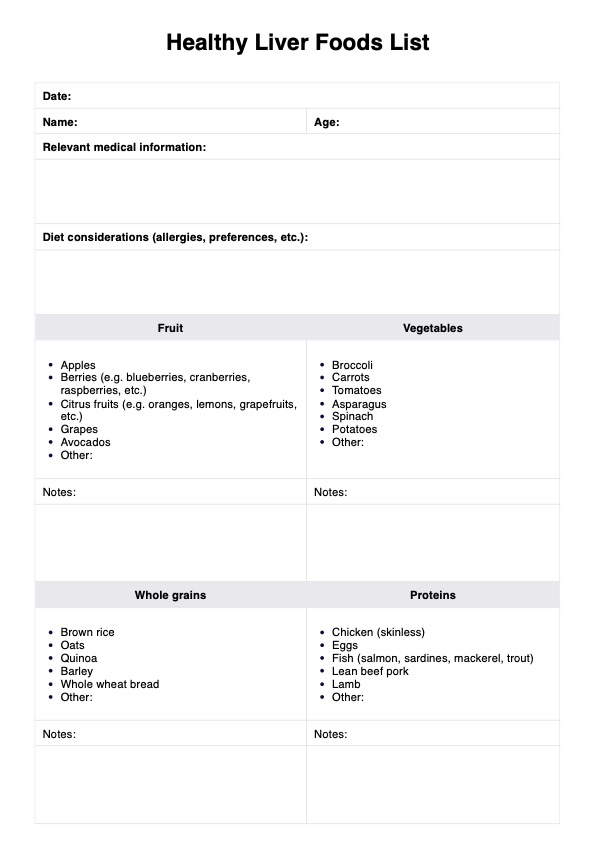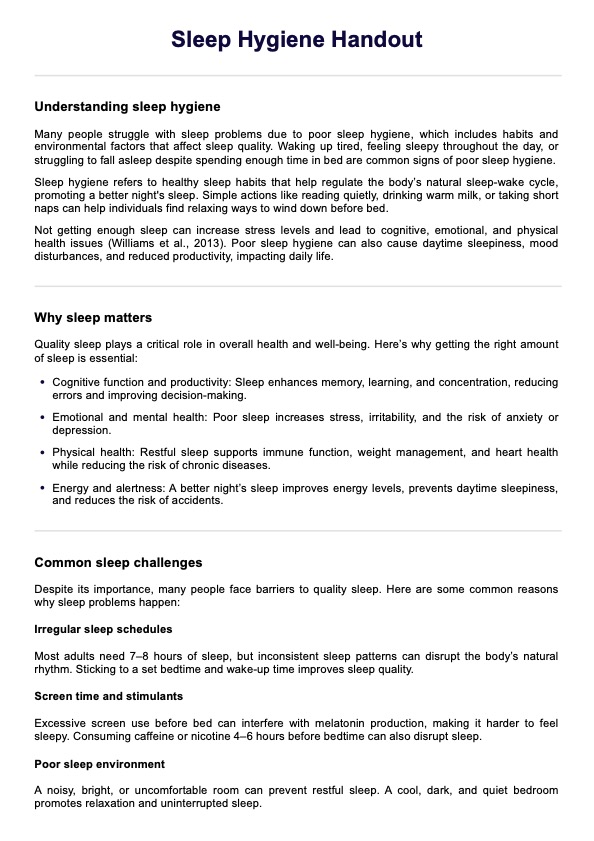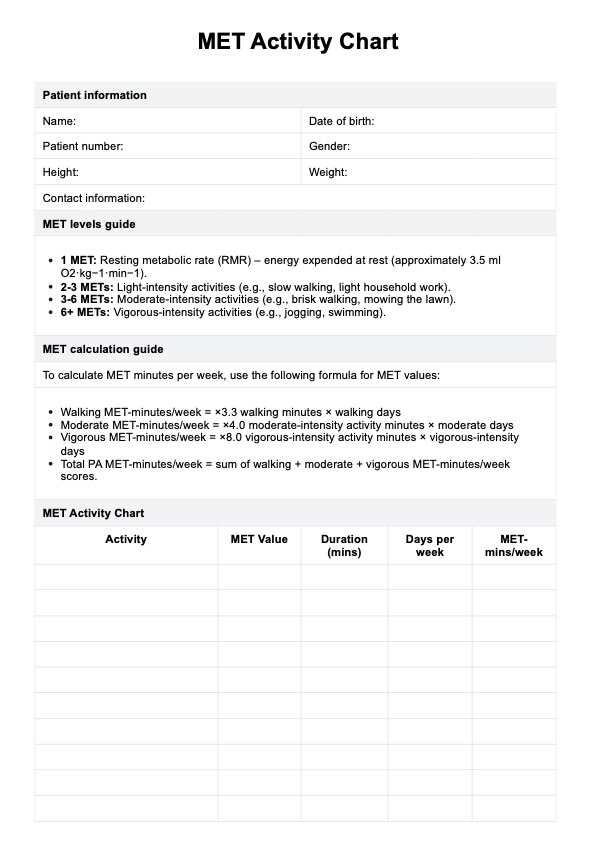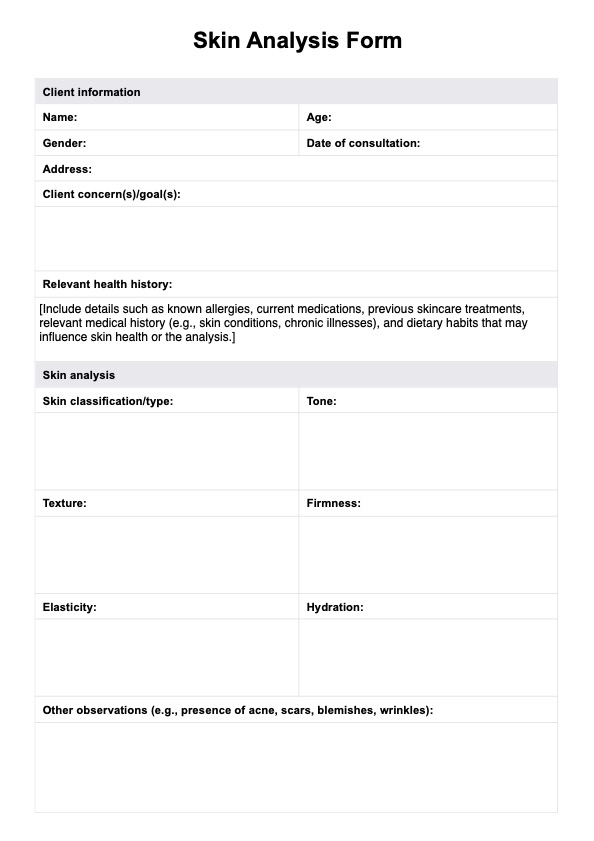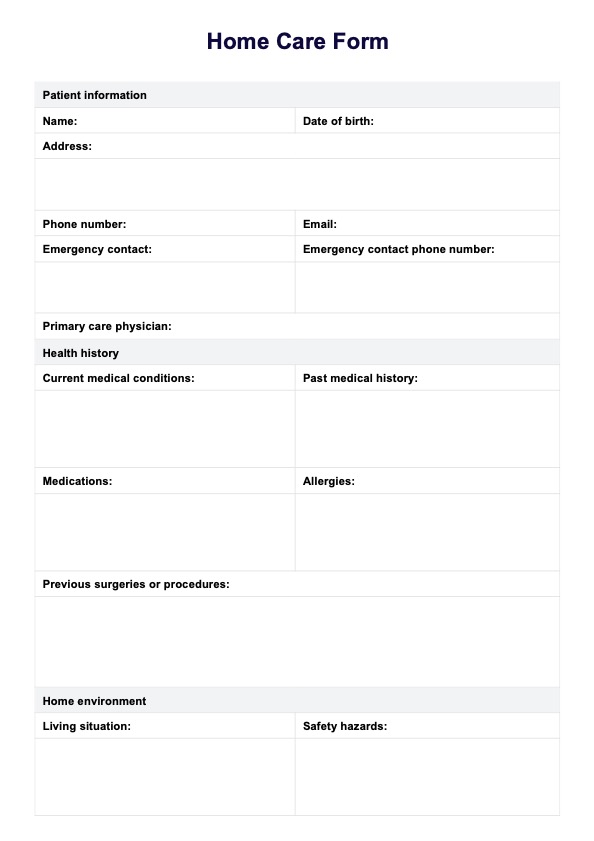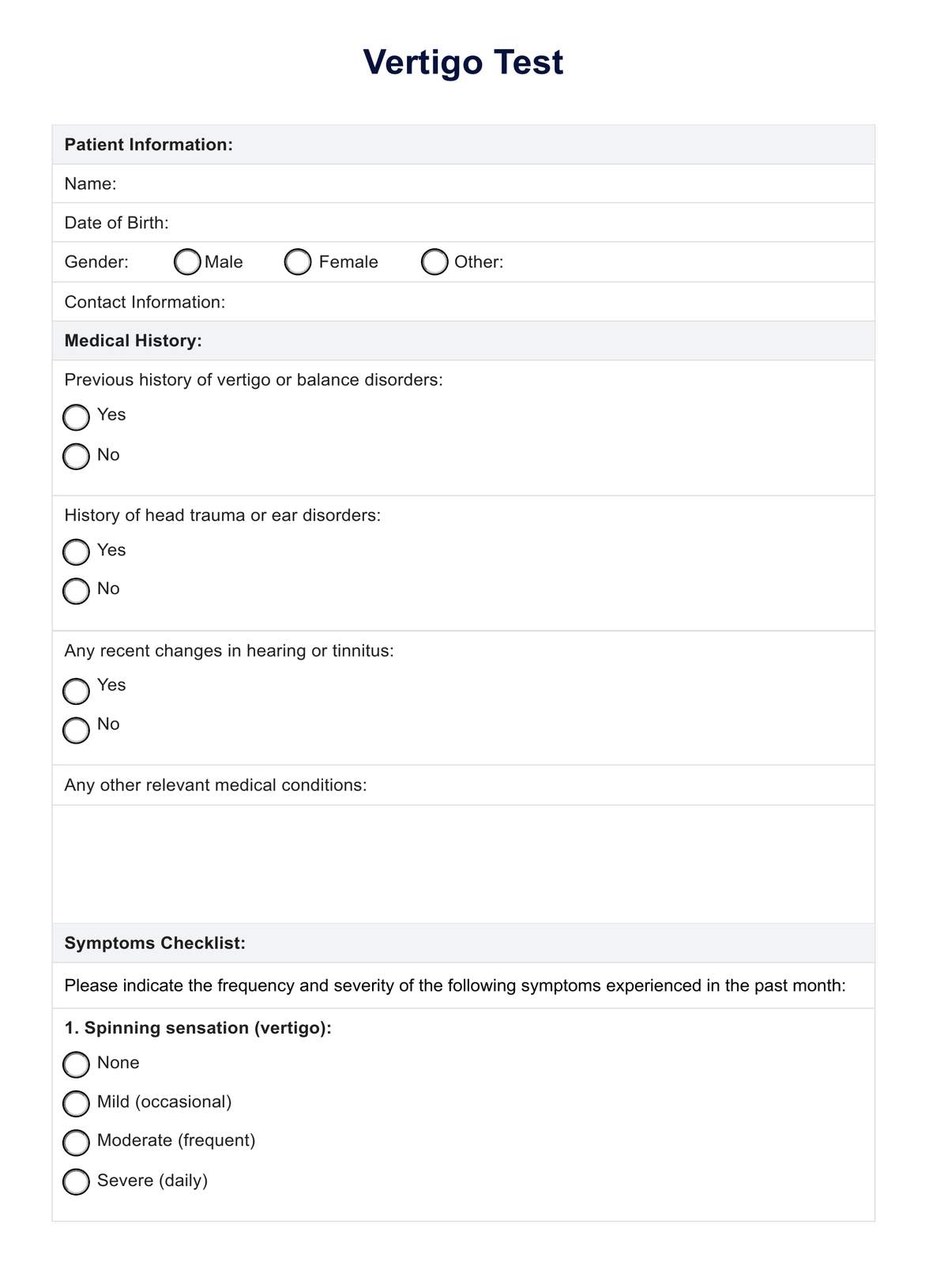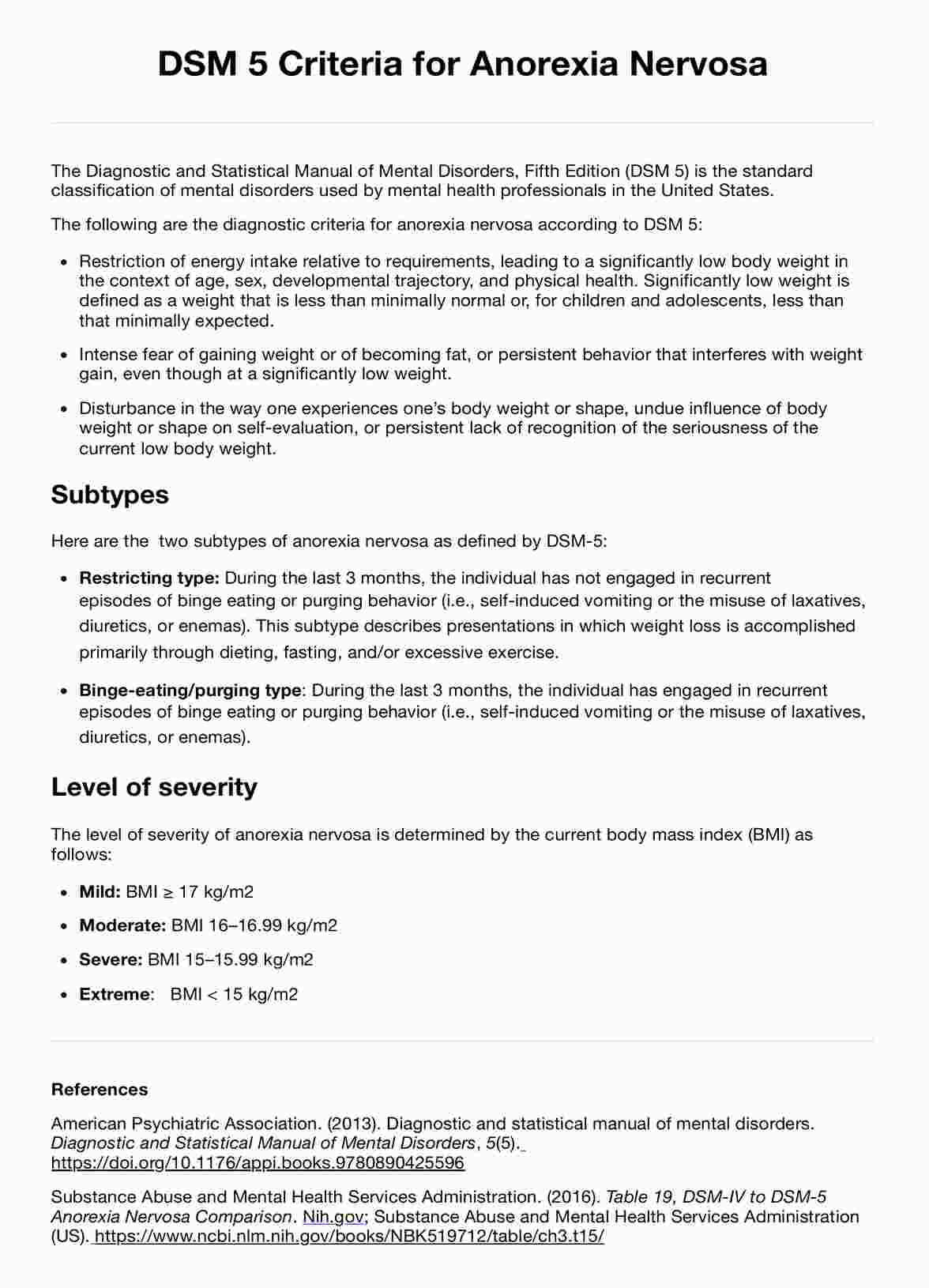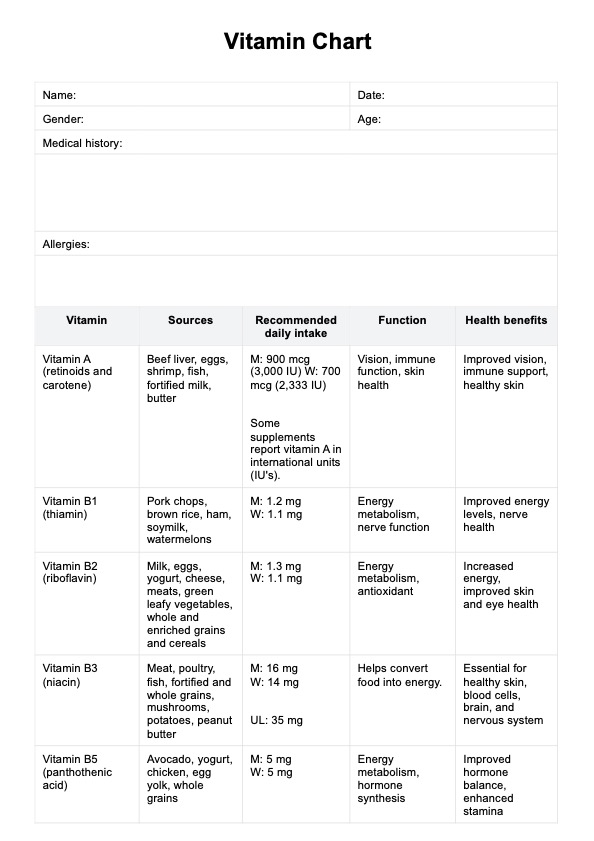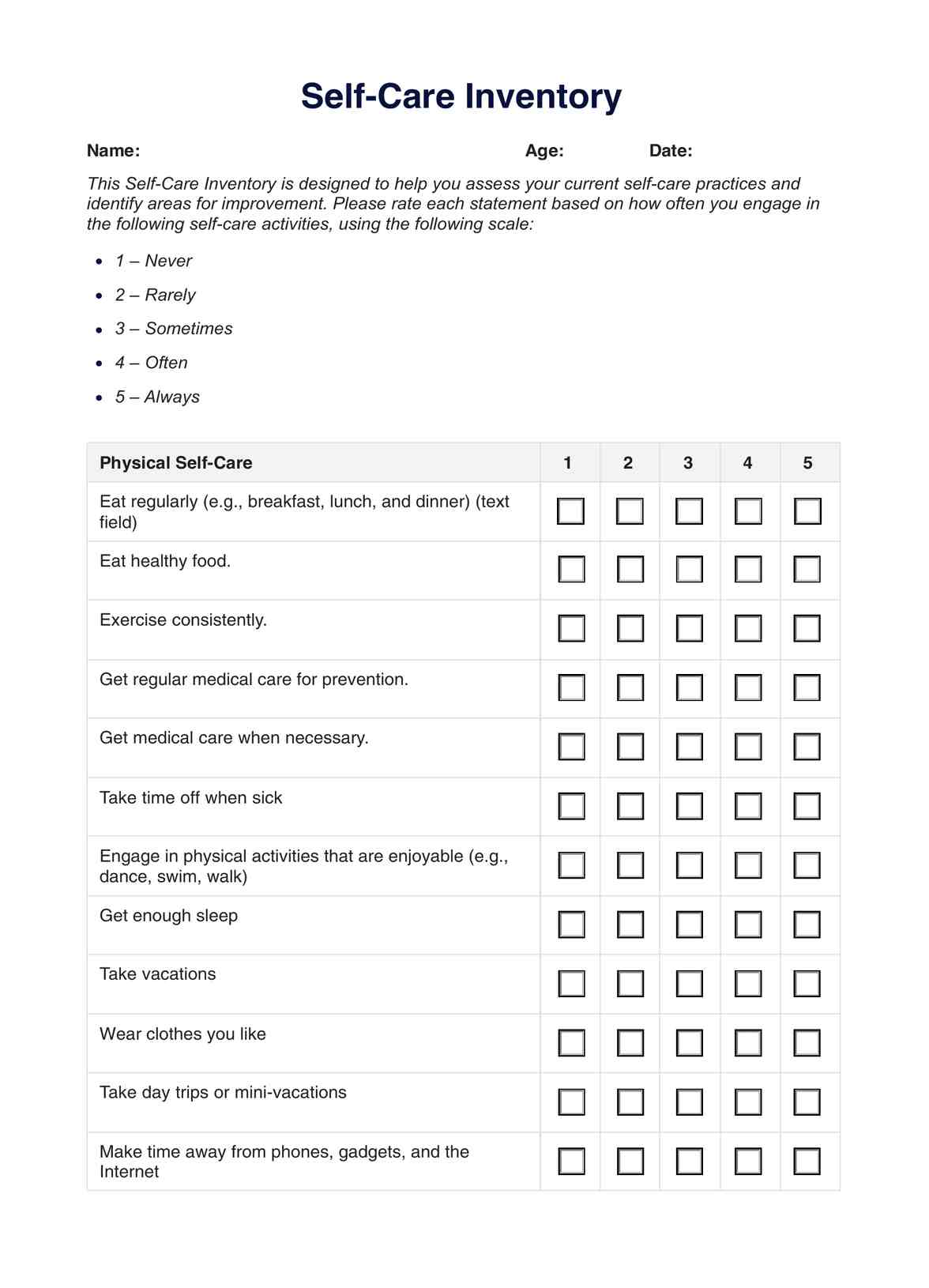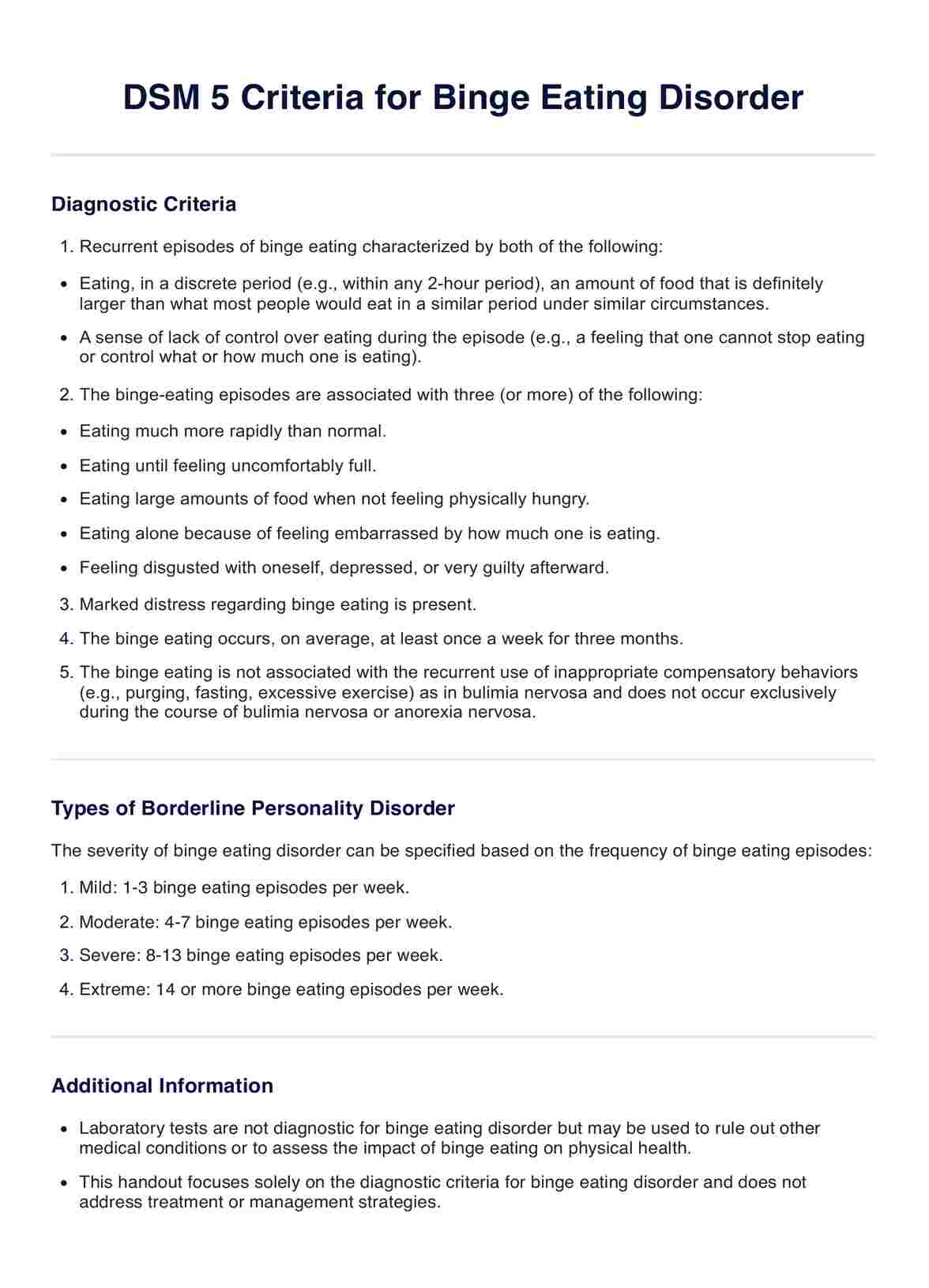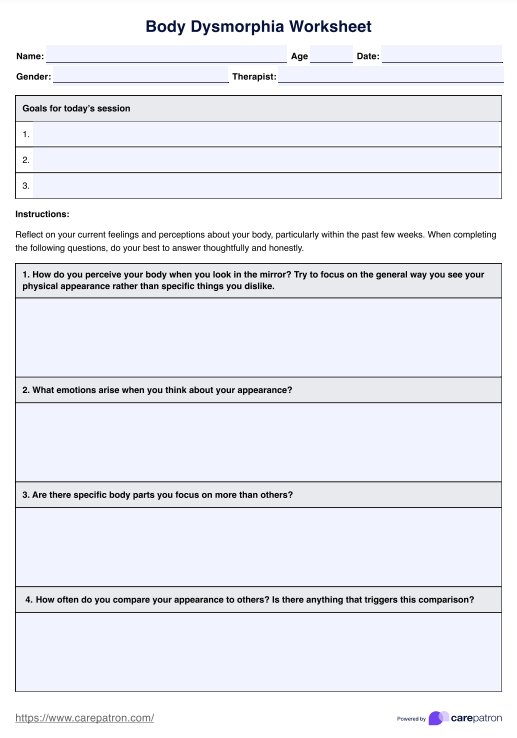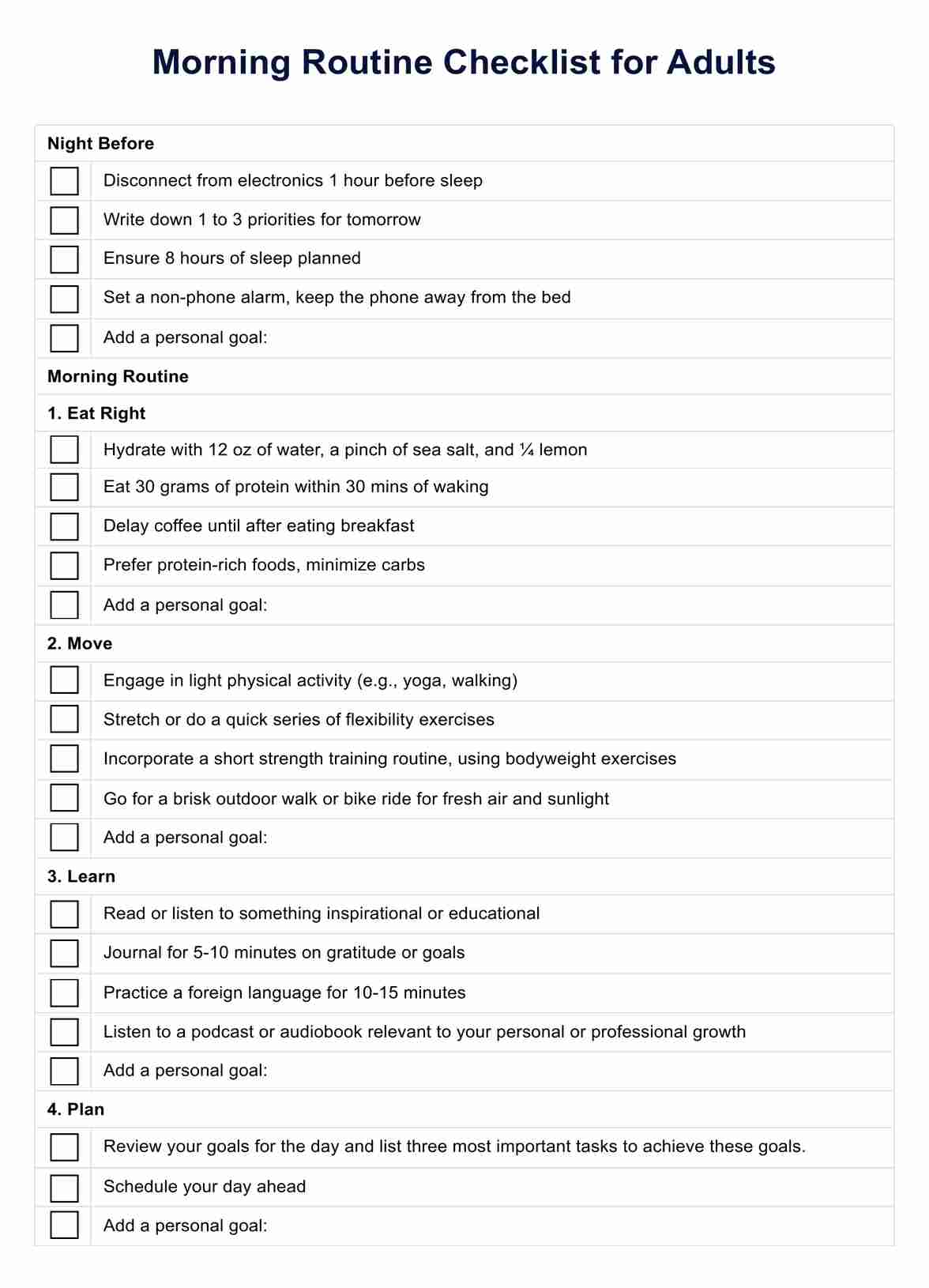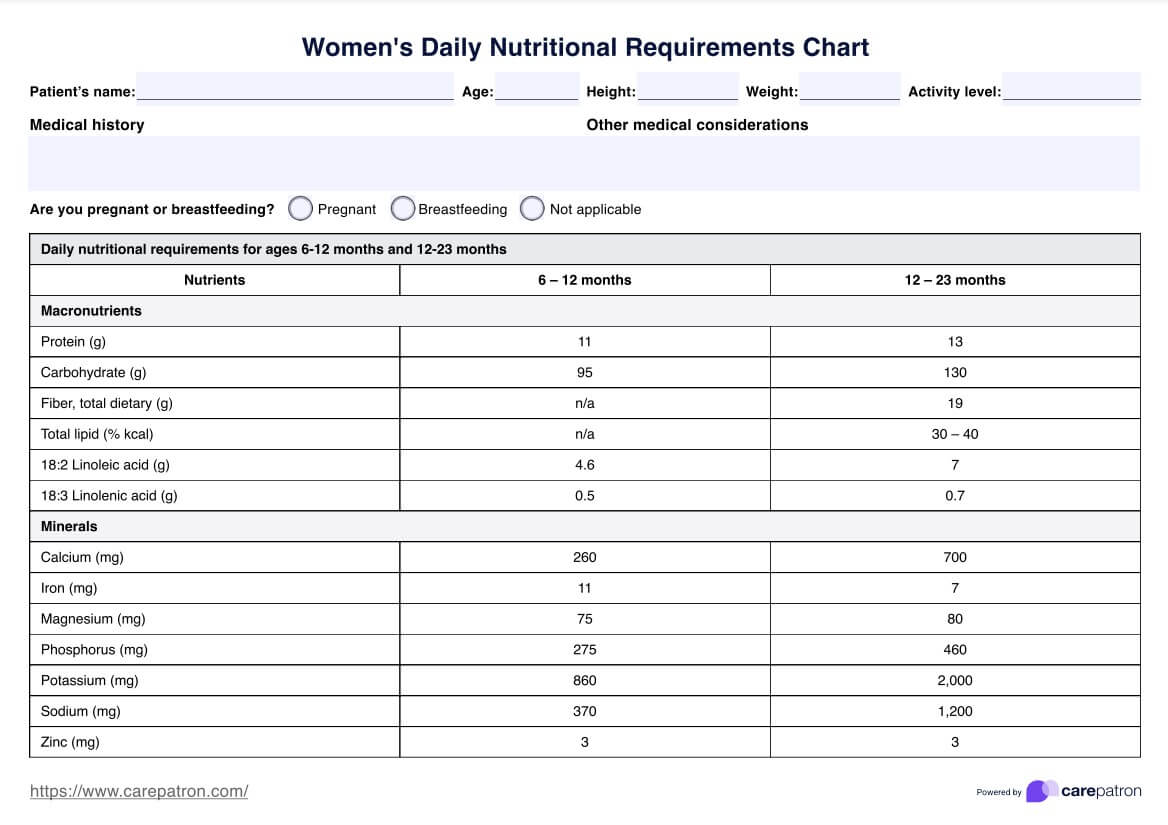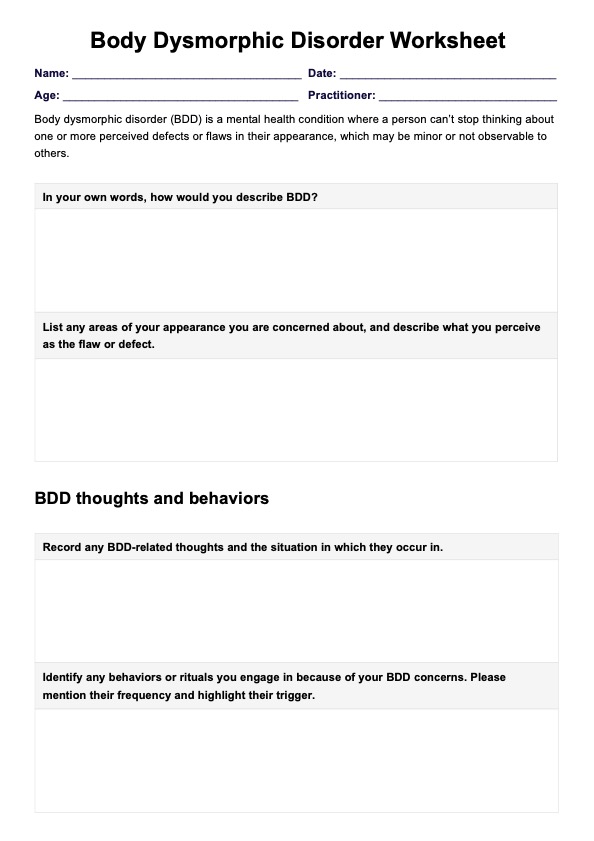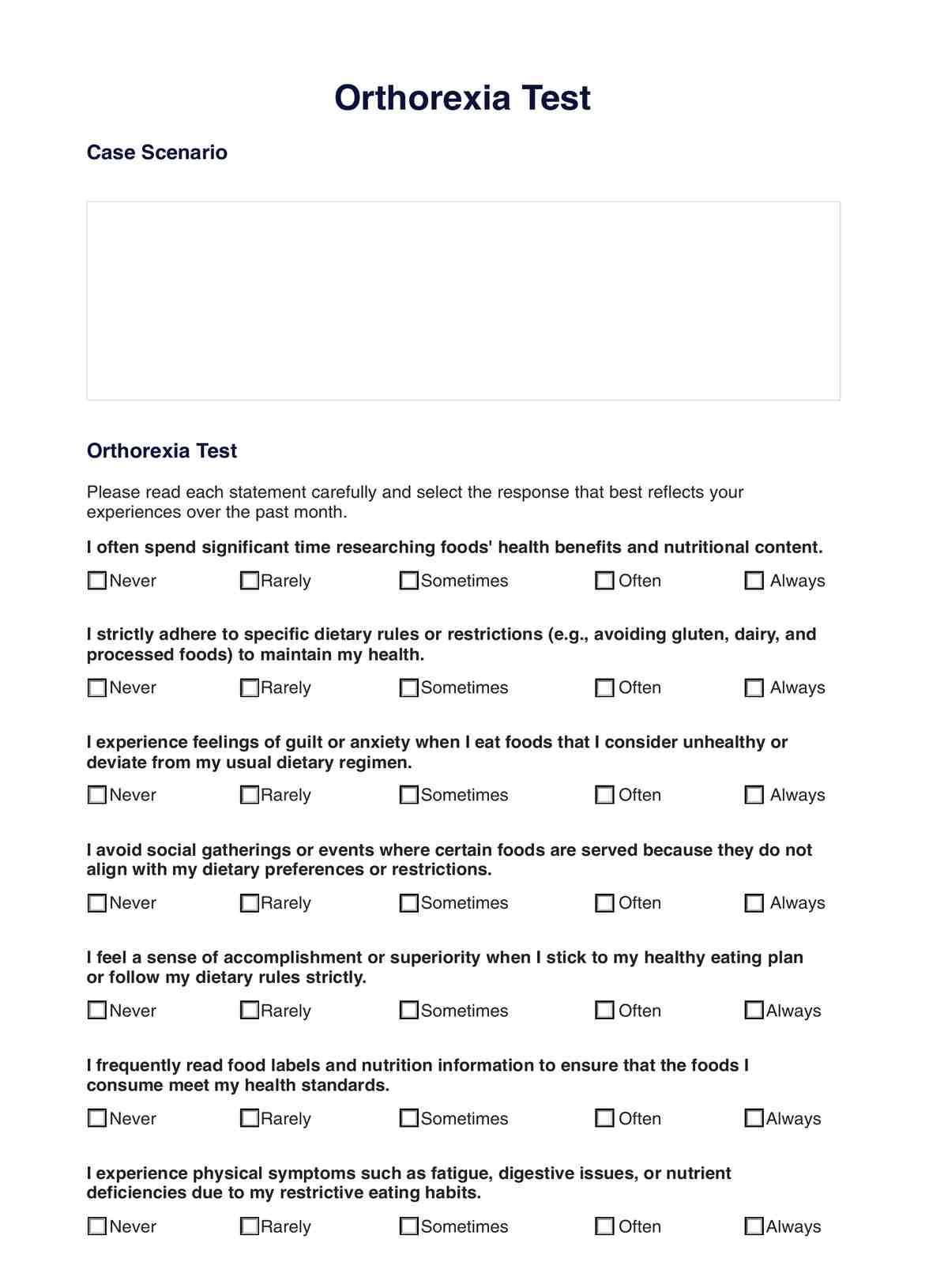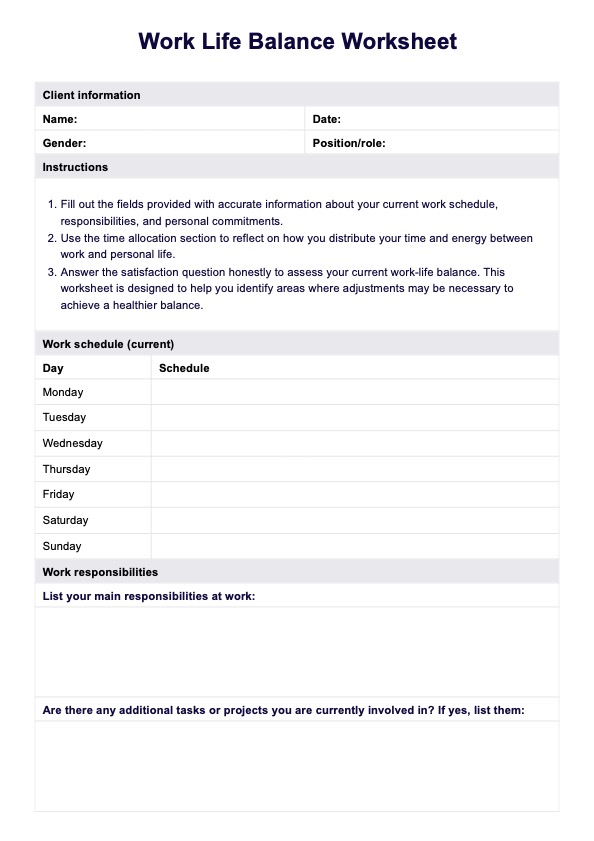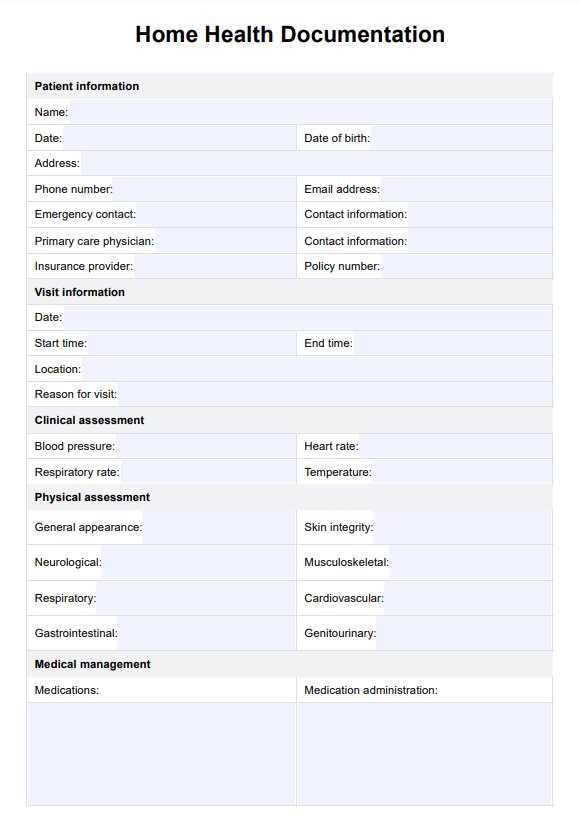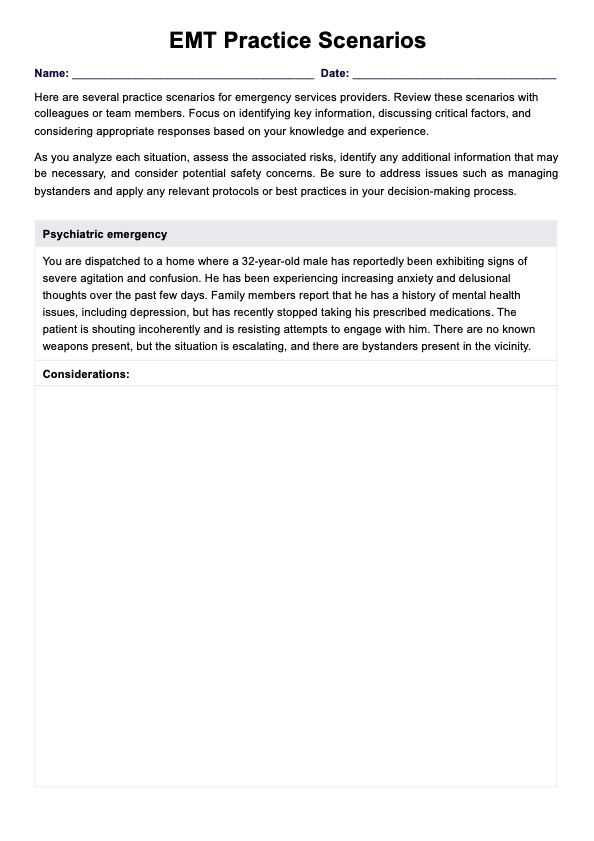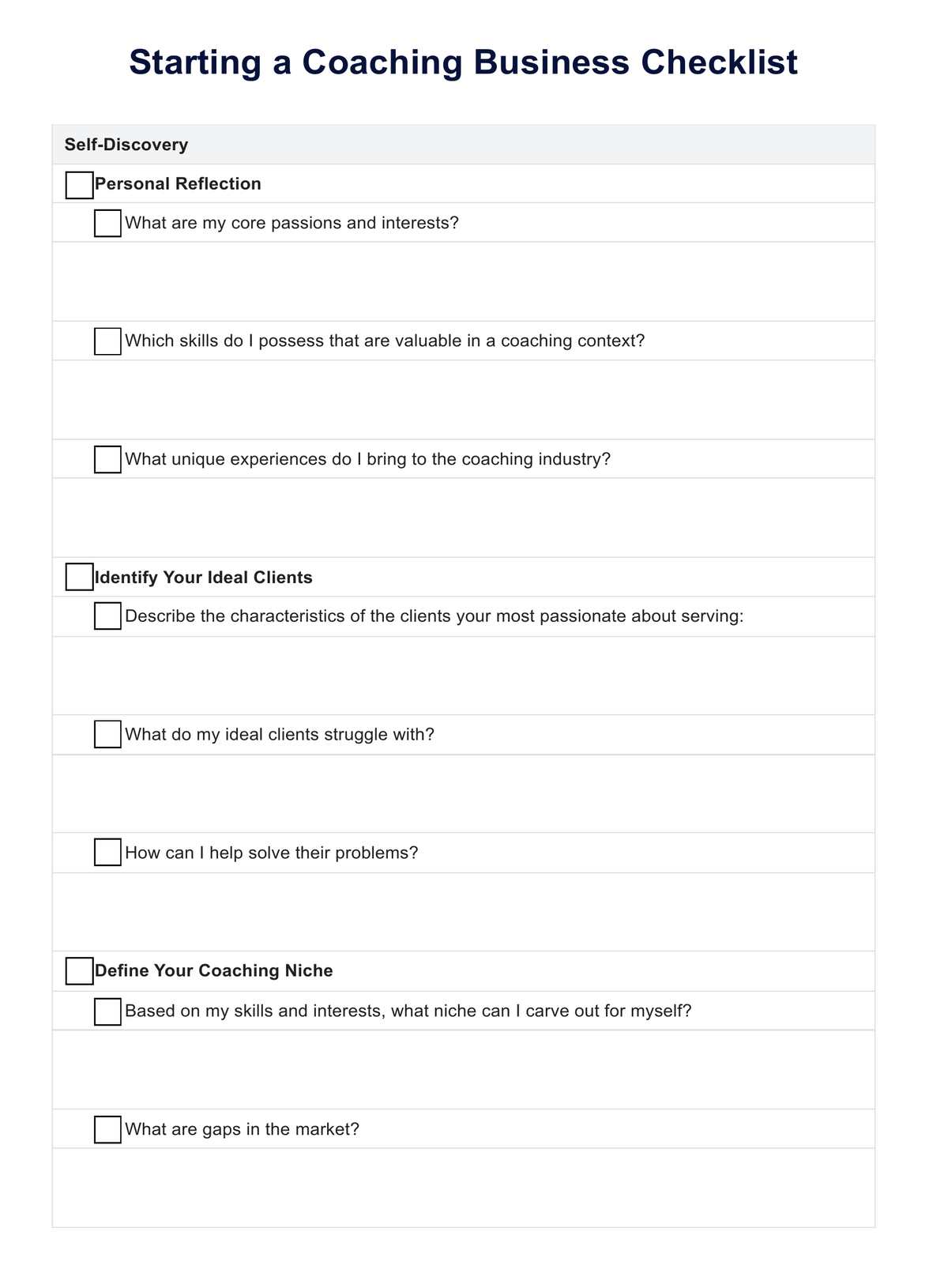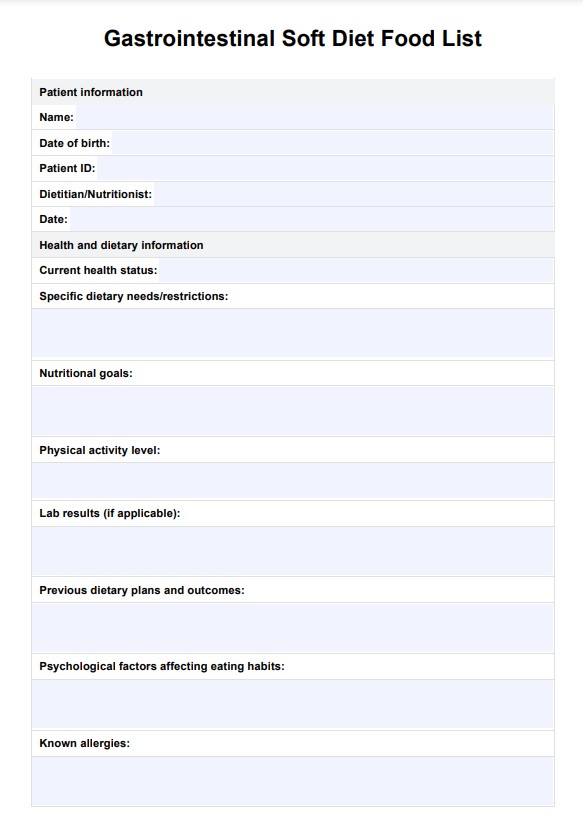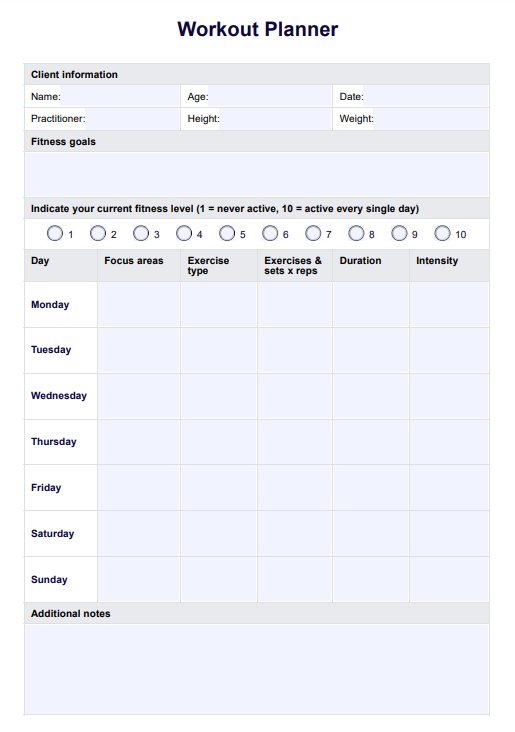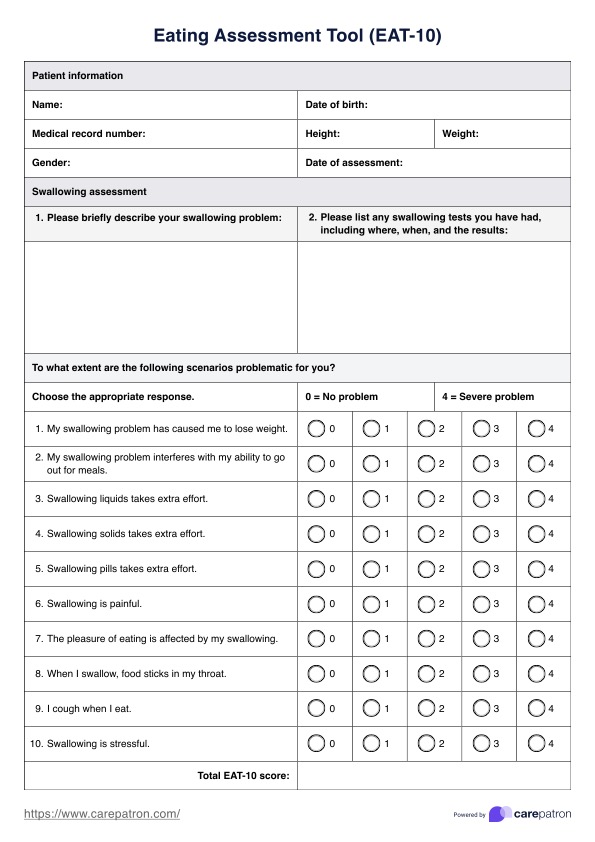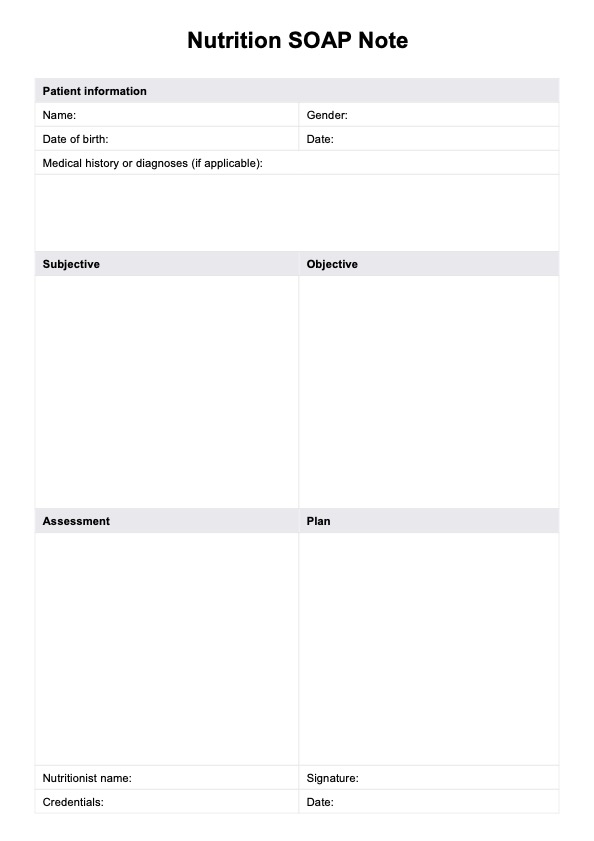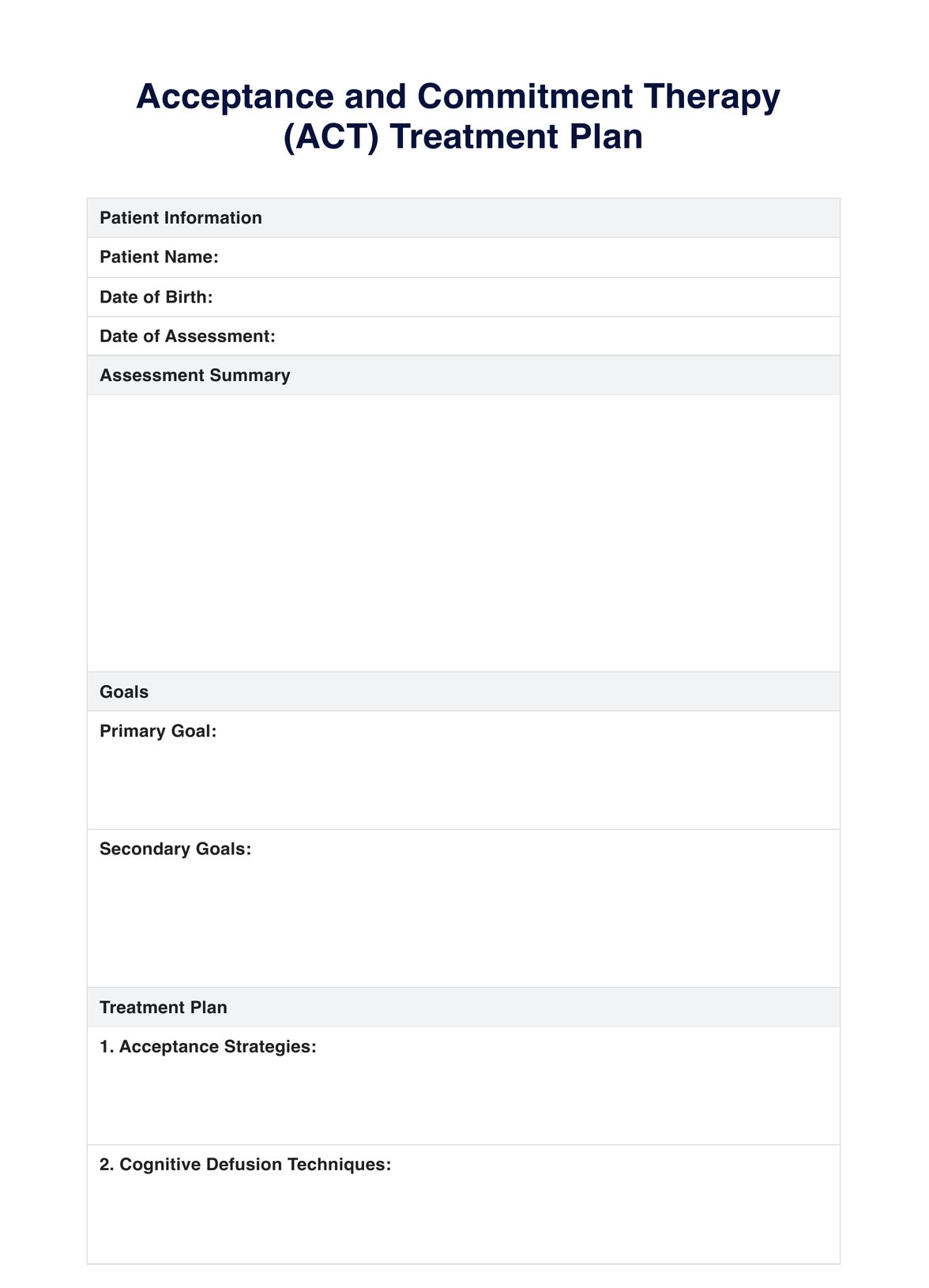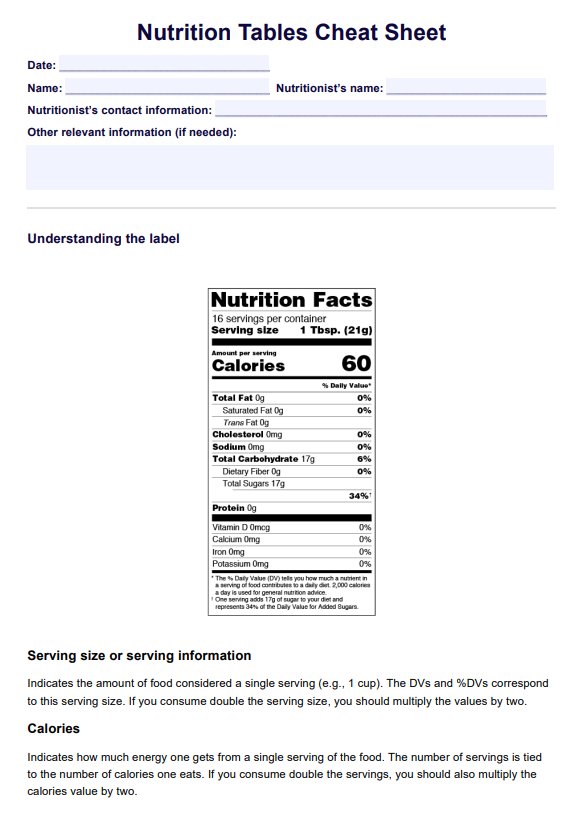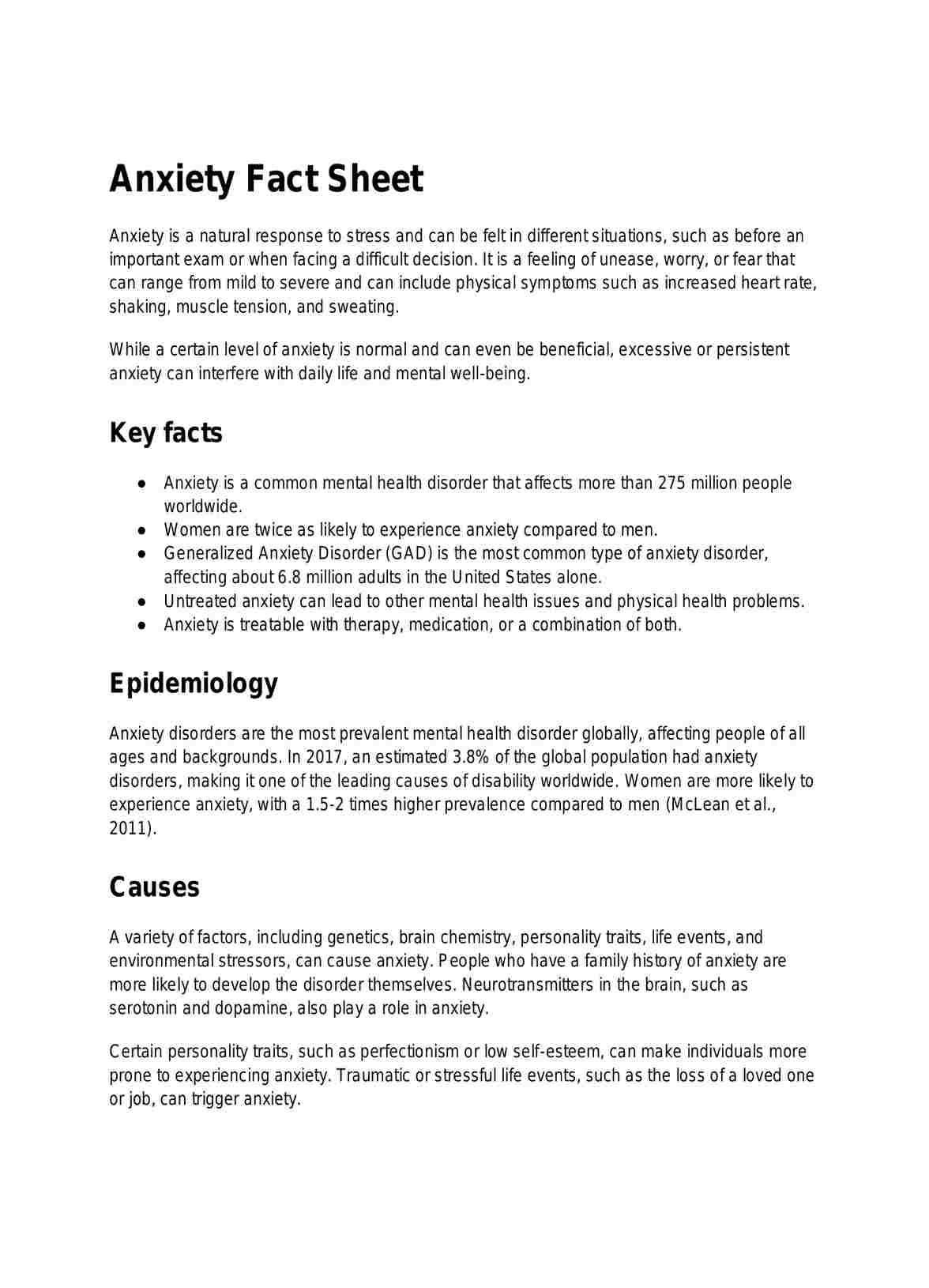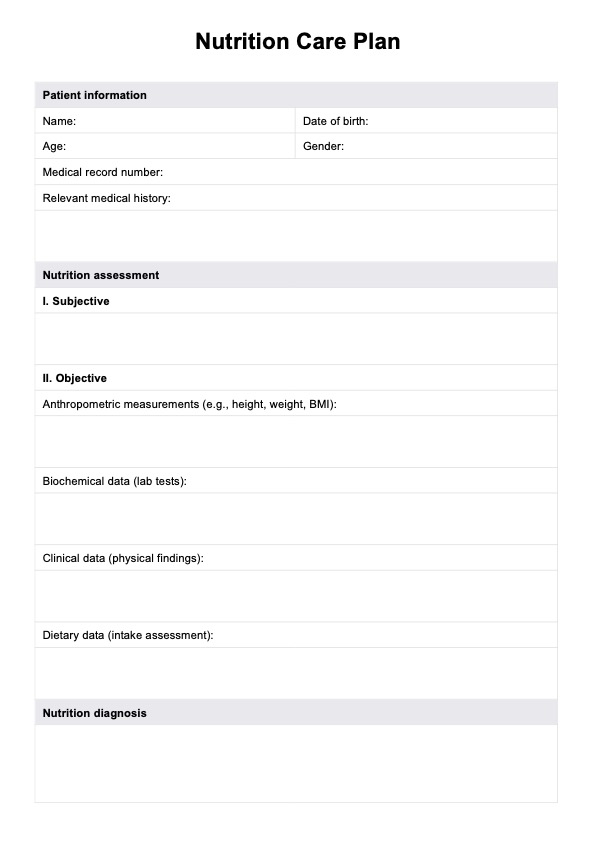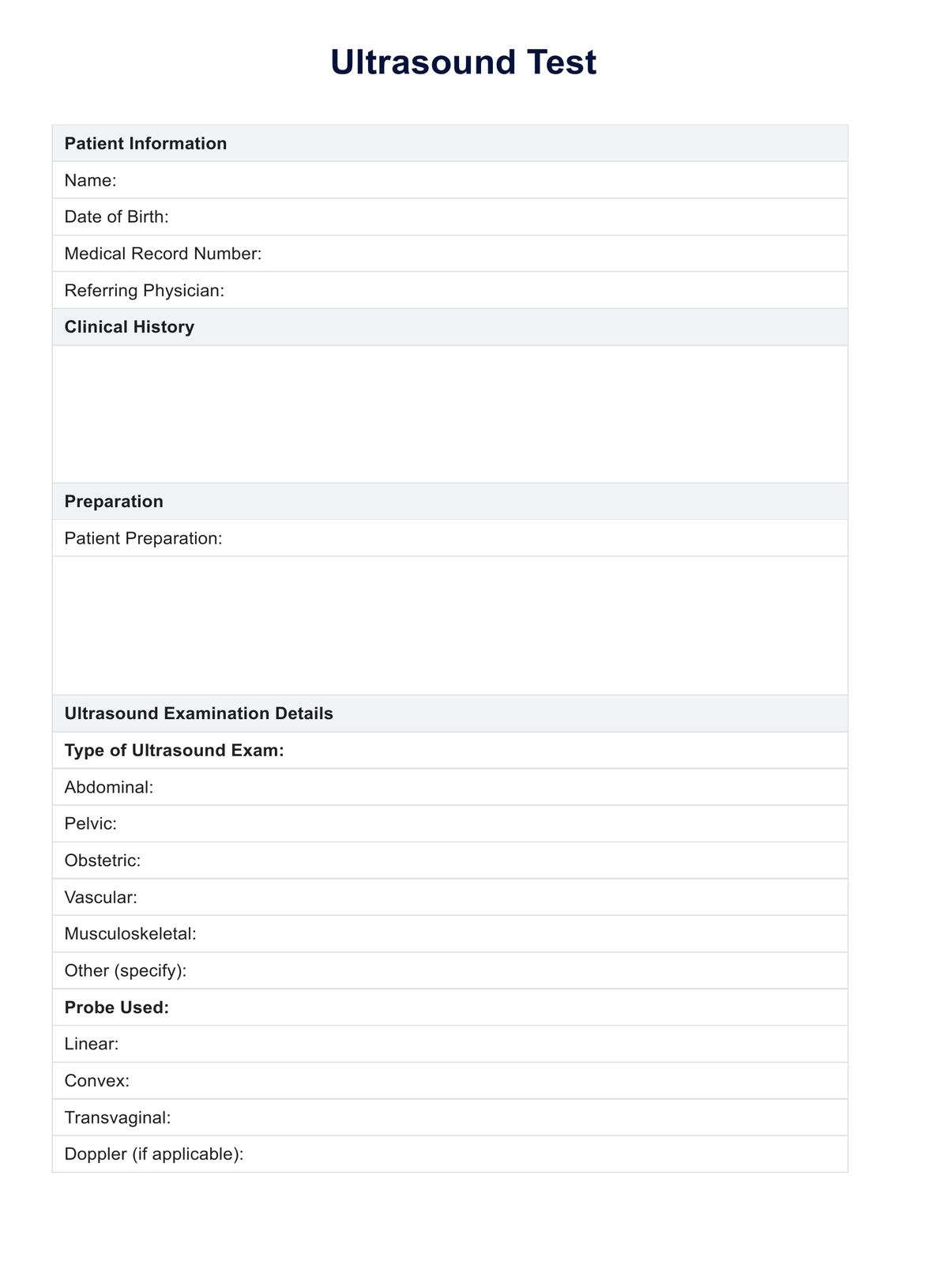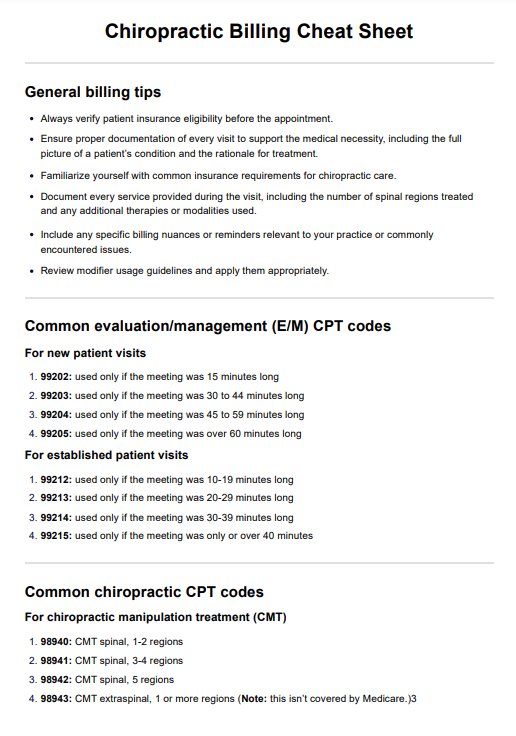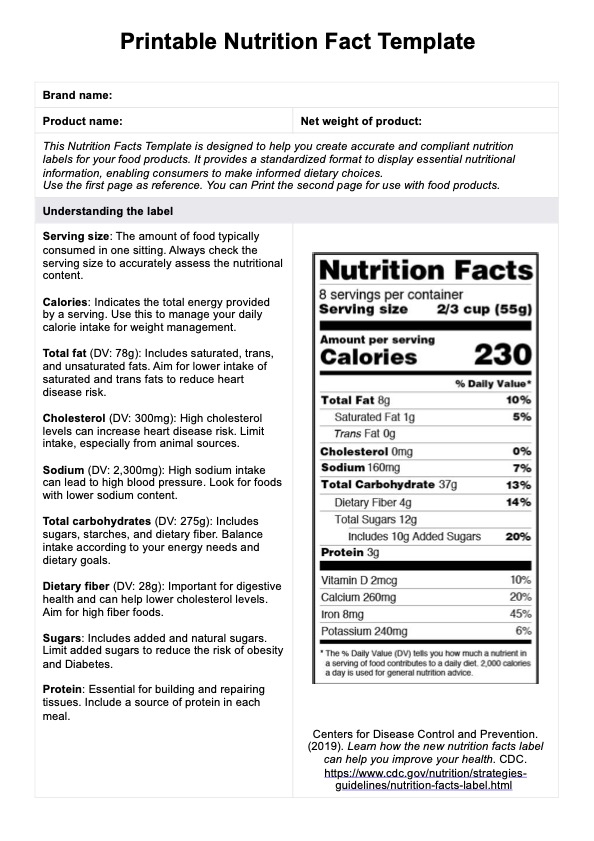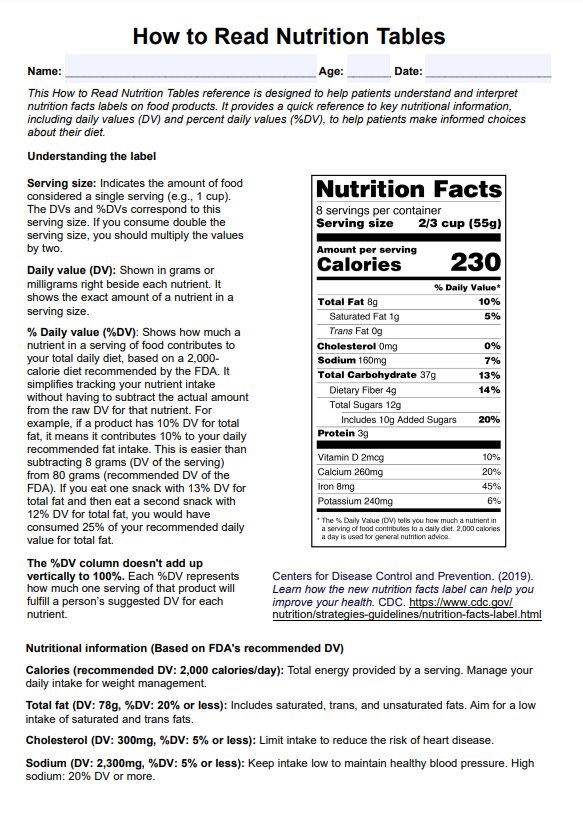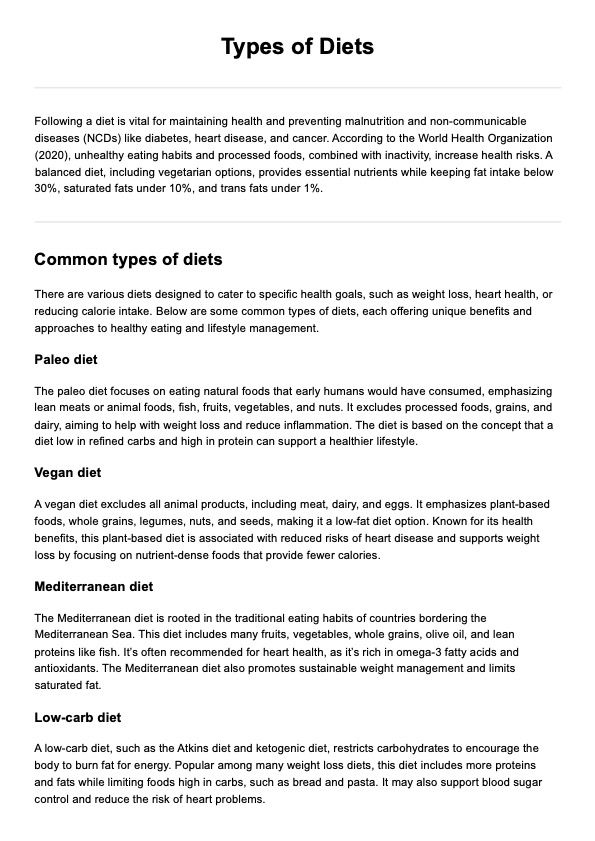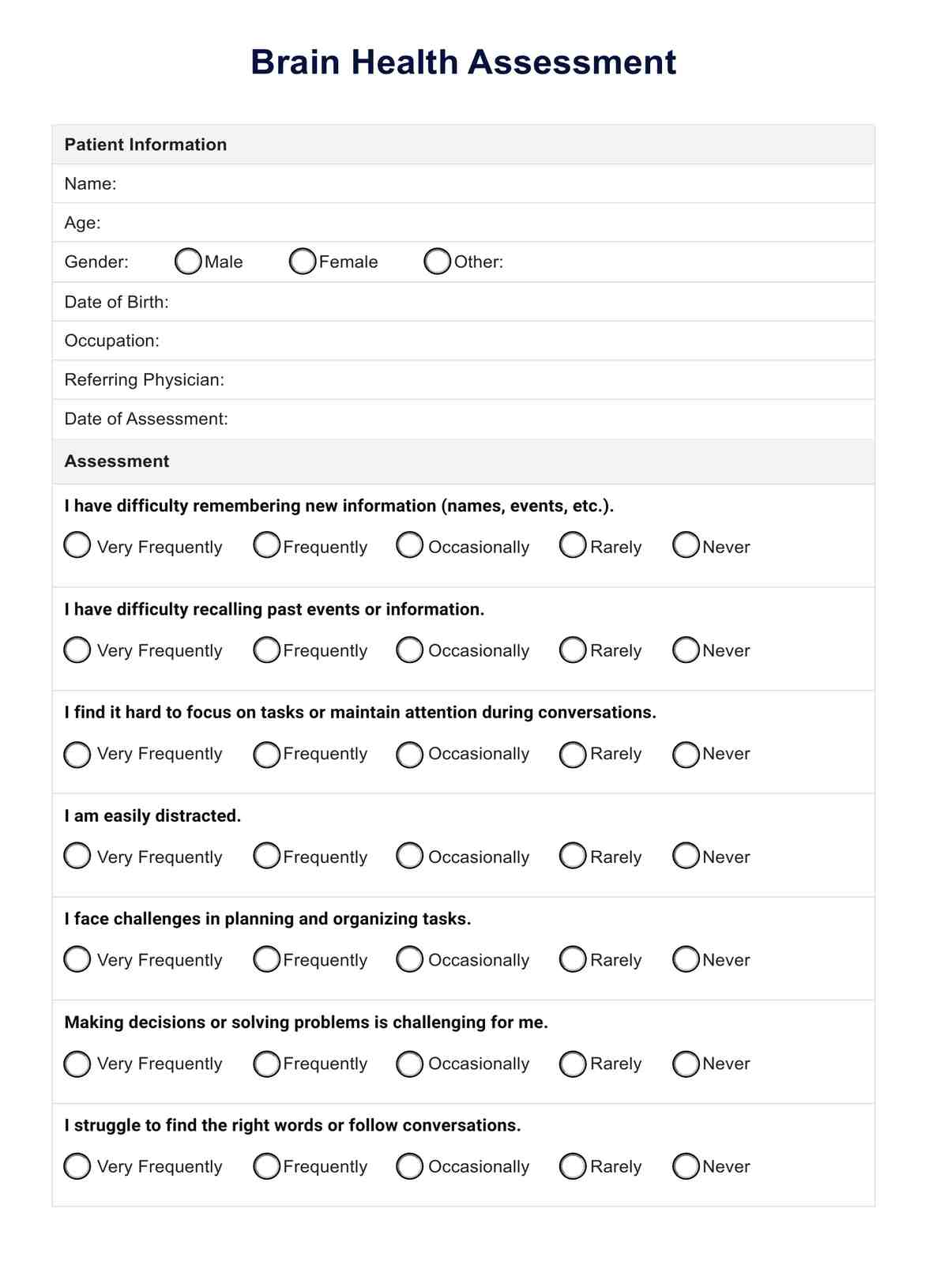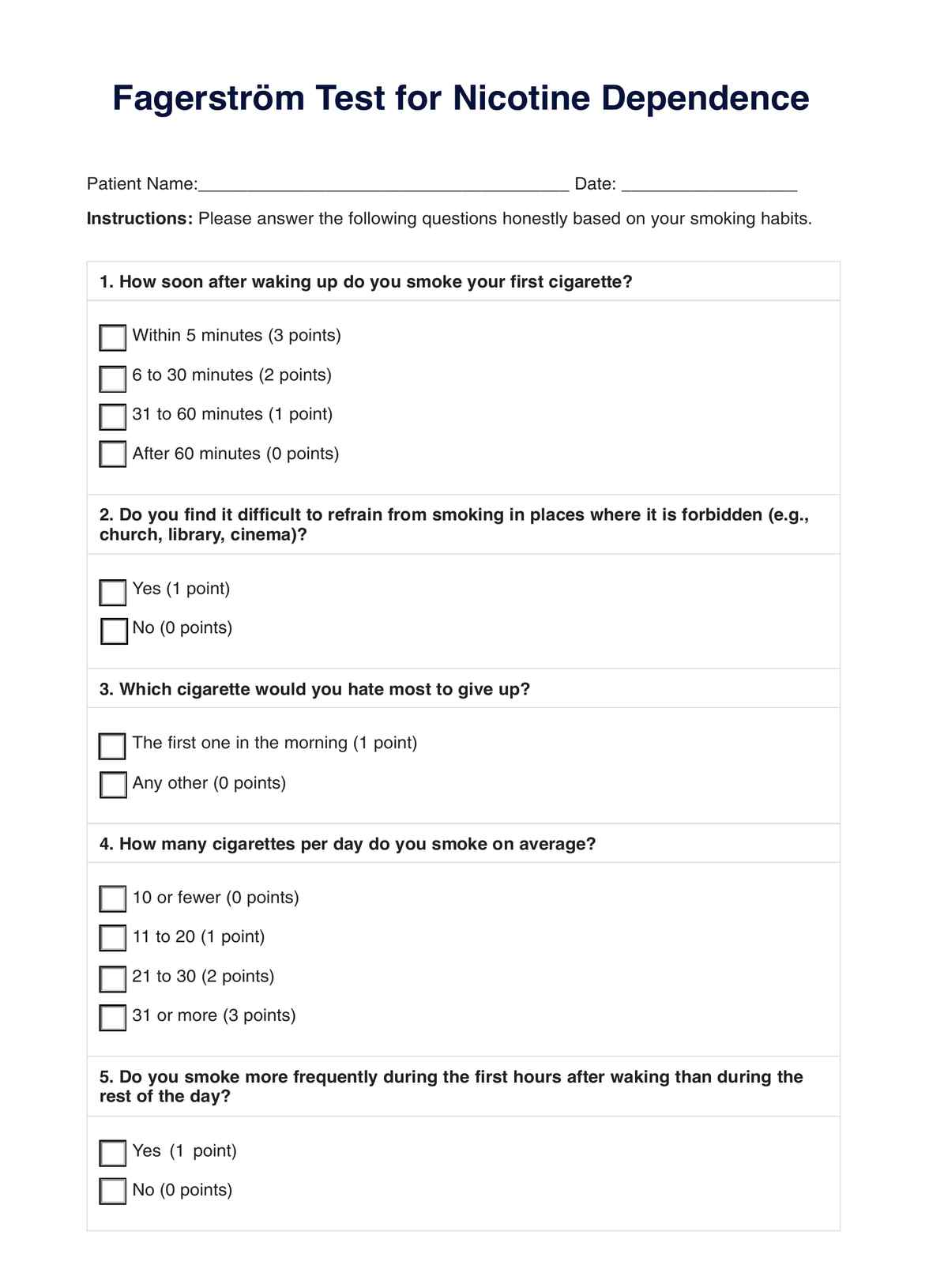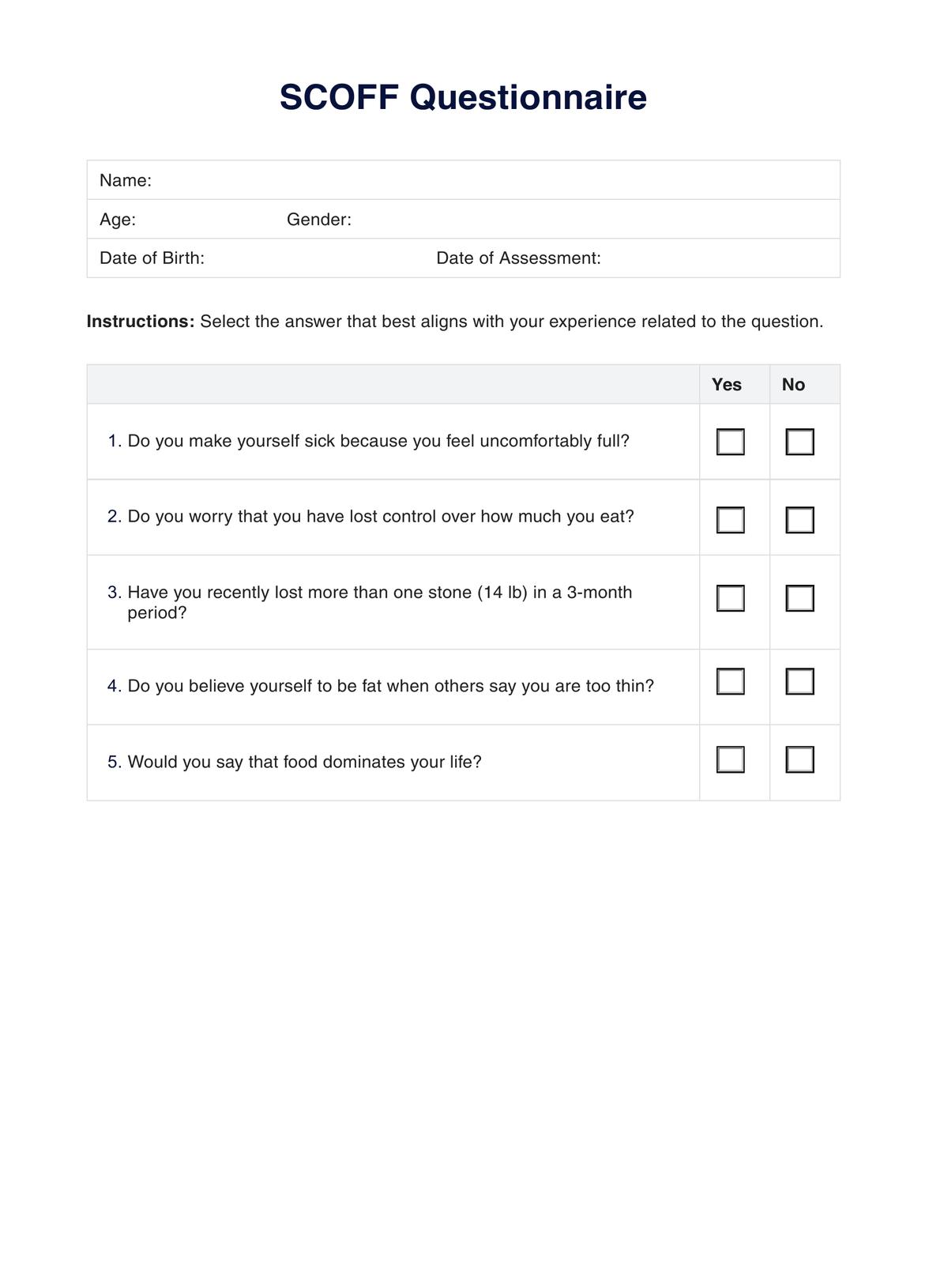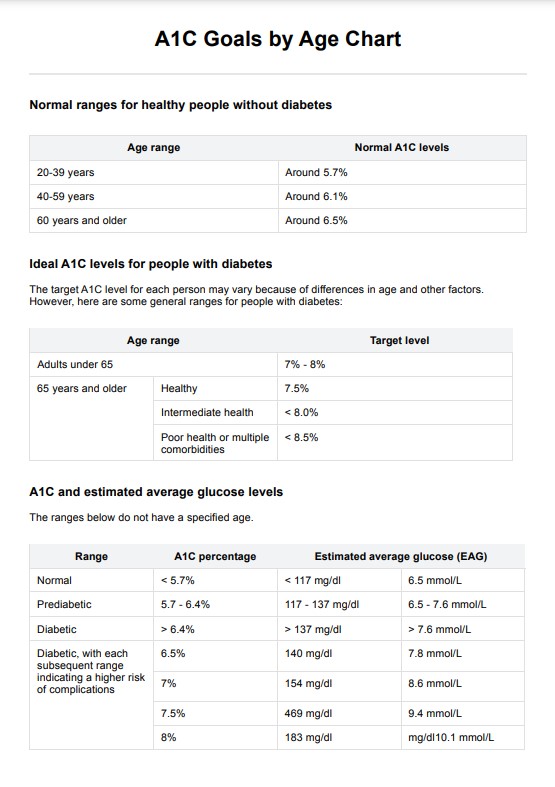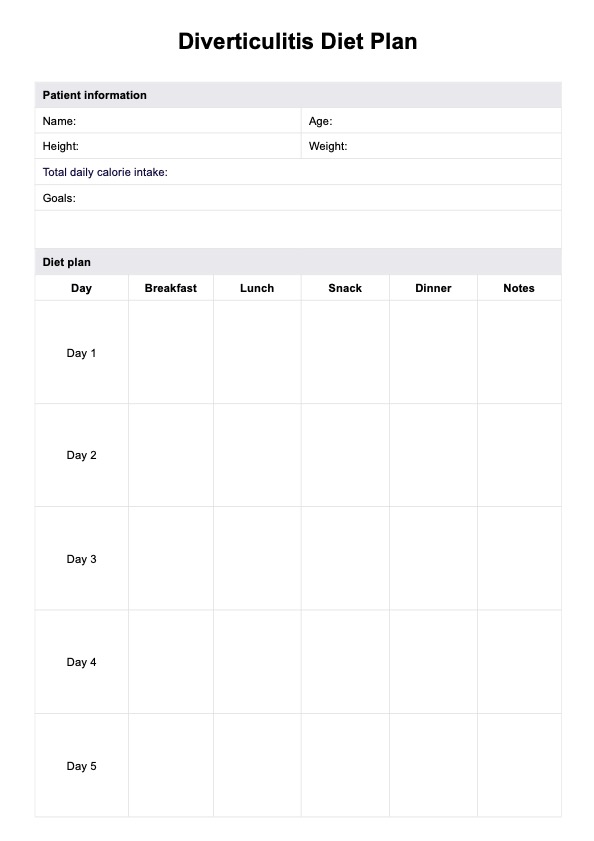Food Safety Handout
Educate your patients about the importance of food safety with this free handout. Download the PDF template and example here.


Understanding food safety
Each year, an estimated 48 million people in the United States are affected by a foodborne illness or food poisoning. The Centers for Disease Control and Prevention reports around 128,000 hospitalizations and 3,000 deaths attributed to these foodbourne illnesses. These figures emphasize the critical importance of food safety education in preventing such incidents.
Food safety education is vital for everyone, including consumers and food handlers. It provides individuals with the necessary knowledge and skills to identify potential hazards, prevent contamination, and ensure safe and wholesome food consumption.
To promote food safety, here are four simple steps:
- Clean: Regularly wash your hands and surfaces to prevent the spread of bacteria. Prioritize handwashing before cooking or eating, and always clean cutting boards, utensils, and countertops after food preparation.
- Separate: Avoid cross-contamination by keeping raw meats, poultry, seafood, and eggs separated from other foods while shopping, storing, and preparing.
- Cook: Thoroughly cook food to eliminate harmful bacteria. Use a food thermometer to ensure that meat, poultry, seafood, and eggs reach their safe internal temperatures.
- Chill: Promptly refrigerate perishable foods and ensure proper thawing of frozen foods before cooking. Remember, bacteria can multiply rapidly in temperatures between 40°F and 140°F (4°C and 60°C), so it's crucial to keep food out of this "danger zone."
Additionally, it is essential to follow proper storage and handling guidelines for food to stay healthy. For instance, store raw meats on the bottom shelf of the refrigerator to avoid potential cross-contamination from drippings onto other items.
Food Safety Handout Template
Food Safety Handout Example
How to use our free Food Safety Handout
Our free Food Safety Handout is a valuable resource for anyone looking to improve their food safety knowledge and prevent foodborne illness.
It covers the basics of food safety, such as washing hands and properly preparing meals and snacks, according to FoodSave. To use the handout, follow these steps:
Step 1: Download the template
You can get a copy of the form using the link on this page. It's also available via the Carepatron app. You can also get it from our resources library, which also has a free Food Diary Template and Food Calorie Chart for your patients.
Step 2: Print and distribute
Once you have downloaded the template, you can print multiple copies of it to distribute to your patients, clients, or community members. The handout can be used in various settings, such as hospitals, schools, and community centers.
Step 3: Review the information
Before distributing the handout, take some time to review the information included in it. Familiarize yourself with the four key steps for food safety and make sure you understand each section thoroughly so that you can answer any questions that may arise.
Step 4: Encourage others to share
Spread the word about food safety by encouraging others to share these fact sheets. You can also use them as a teaching tool in your workplace or community to raise awareness and promote safe food practices.
Other helpful food safety tips
Here are several tips you can share with your clients or community members to promote food safety:
Be aware
Preventing foodborne illness begins with awareness and is a continuous effort that involves staying updated on the latest safety techniques and information.
Throw away questionable foods
When in doubt, throw it out! The saying "when in doubt, throw it out" may sound cliché, but it is a crucial food safety practice. If you are unsure about the safety of a certain food or beverage, do not consume it.
Keep you and your guests safe
As a food handler or preparer, you are responsible for the safety of your customers and guests. Follow proper hygiene practices, use clean equipment and surfaces, and store food at the appropriate temperatures. This can dramatically reduce the risk of making yourself or others sick with foodborne diseases.
Stay updated
Subscribe to email updates from reputable organizations such as the CDC or FDA to receive the most current food safety alerts and food safety tips. They often provide important information on food recalls and other safety concerns.
Use various educational materials
Utilize various resources, including websites, training workshops, and food safety course materials, to deepen your understanding and skills in food safety measures.
Commonly asked questions
Preventing foodborne illness starts with four basic steps: Clean, Separate, Cook, and Chill.
Food safety education is crucial because it helps individuals and businesses prevent foodborne illnesses. Following proper food safety practices can reduce the risk of contamination and ensure food is safe for consumption.
Health coaches are critical in promoting food safety by educating clients on proper food handling, preparation techniques, and eating. They can also help identify potential sources of contamination and provide guidance on how to prevent food-related illnesses.


